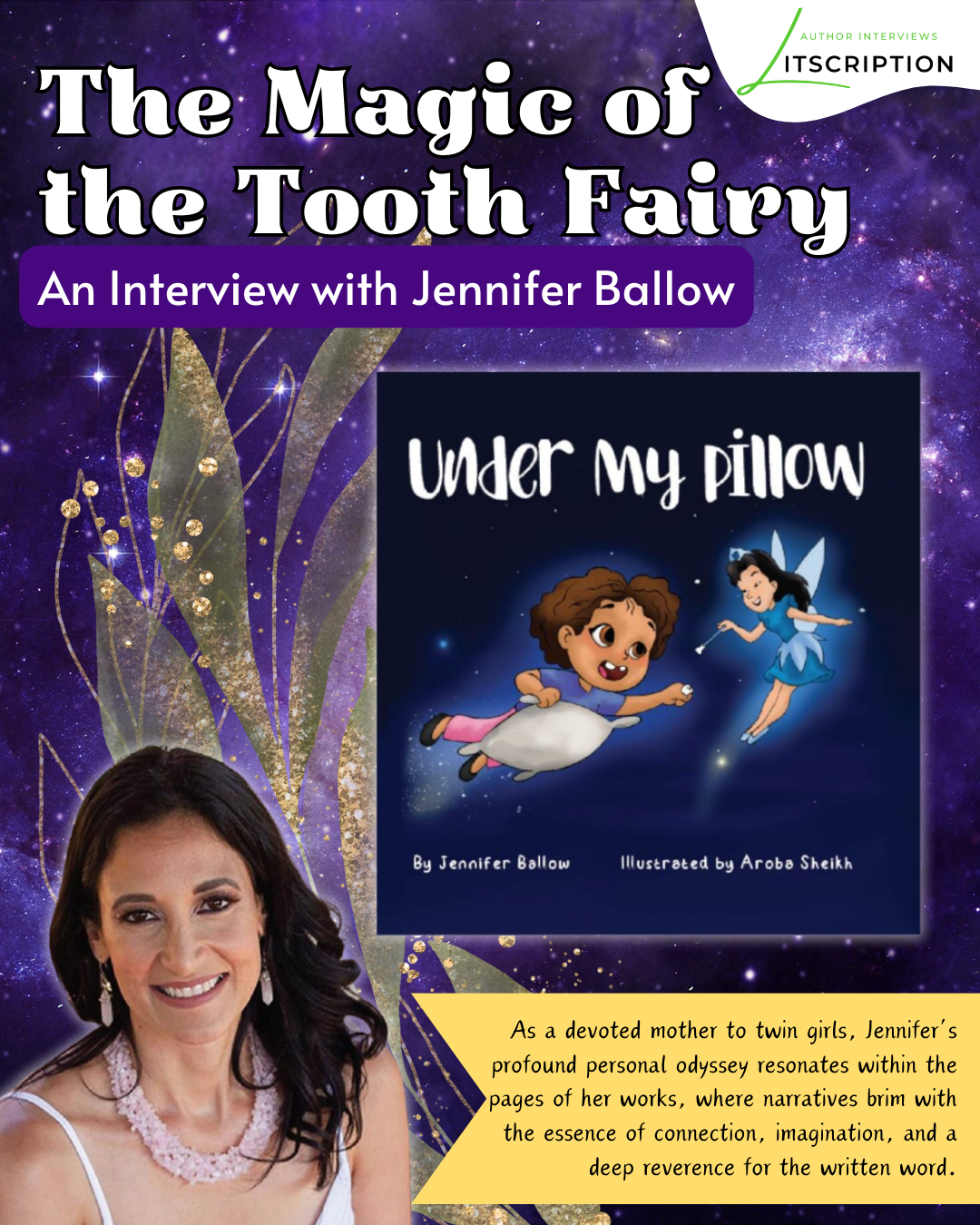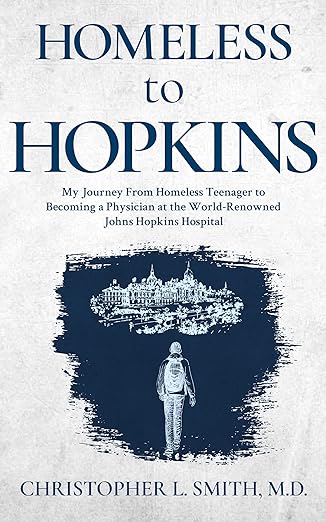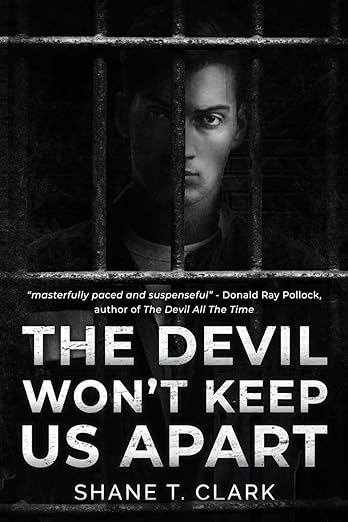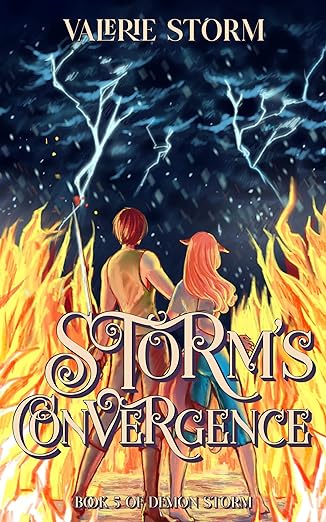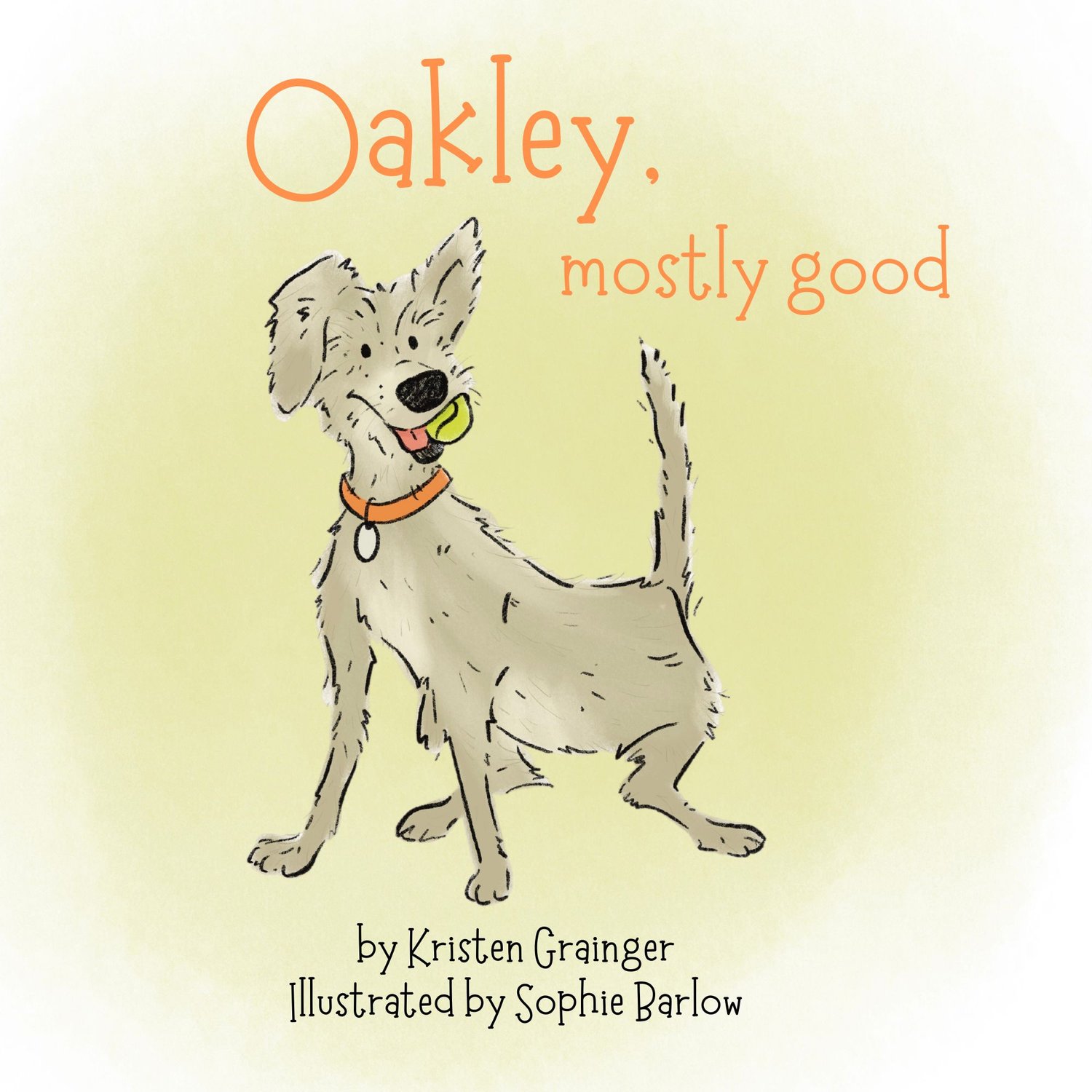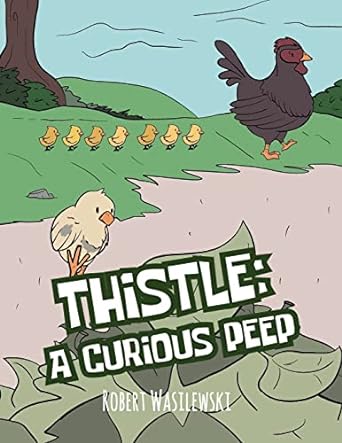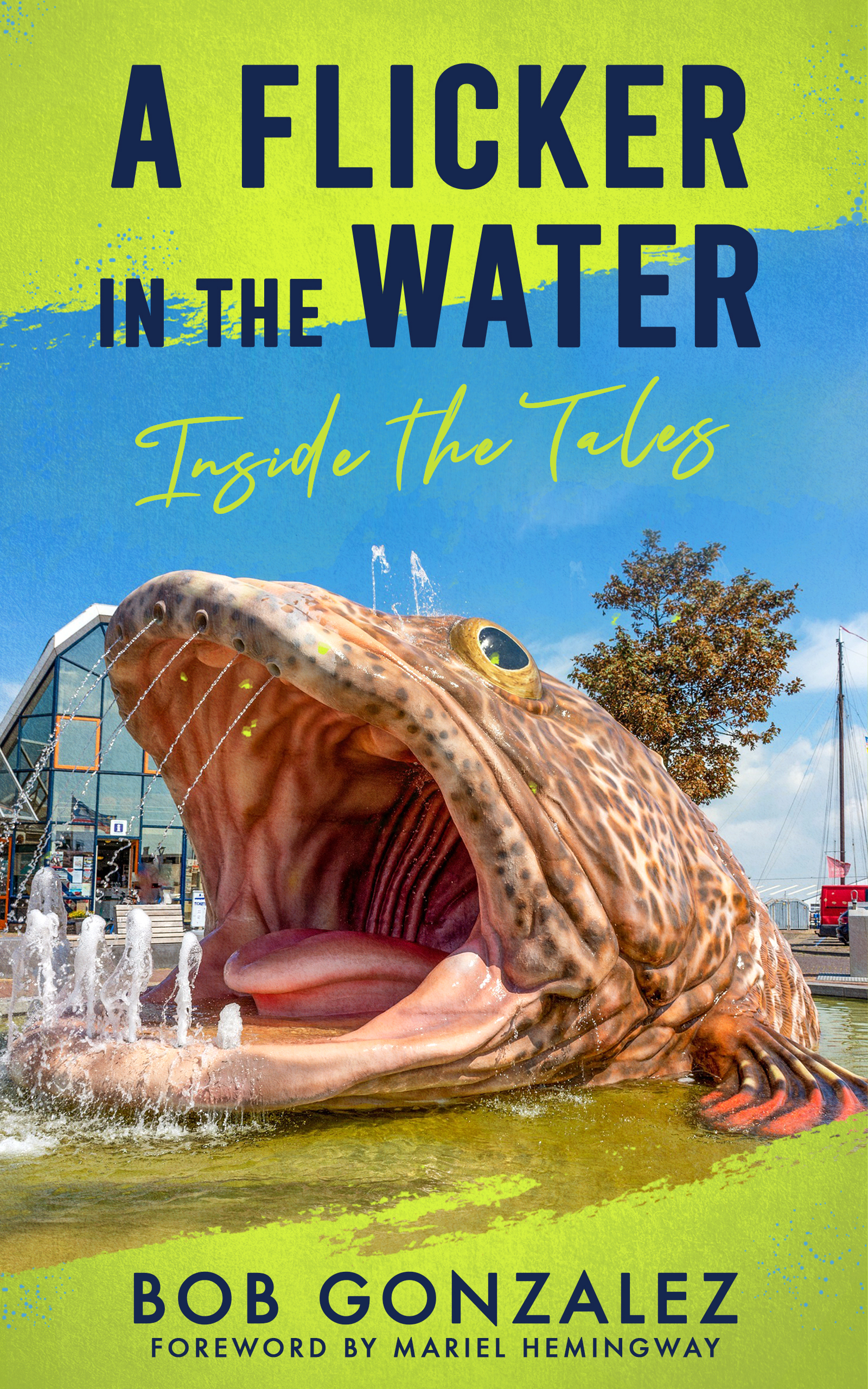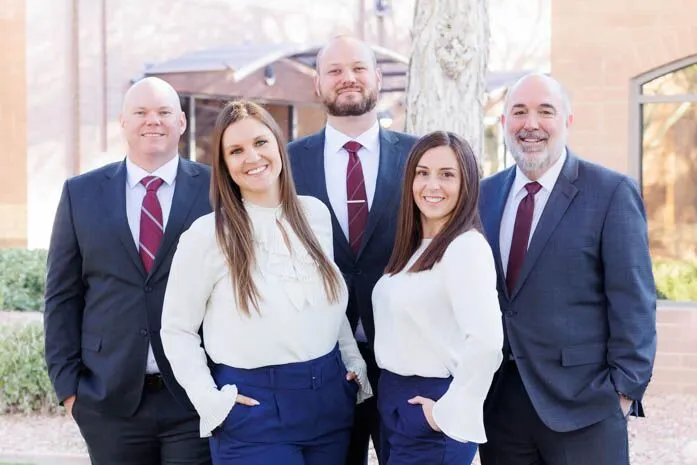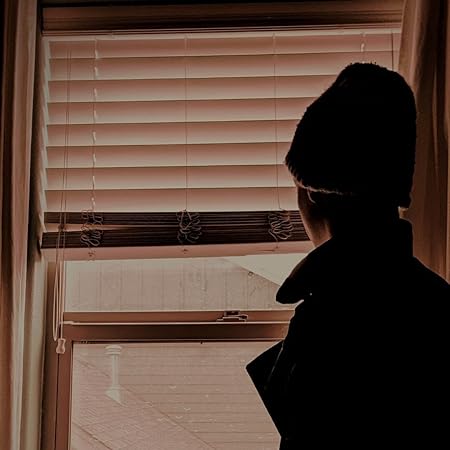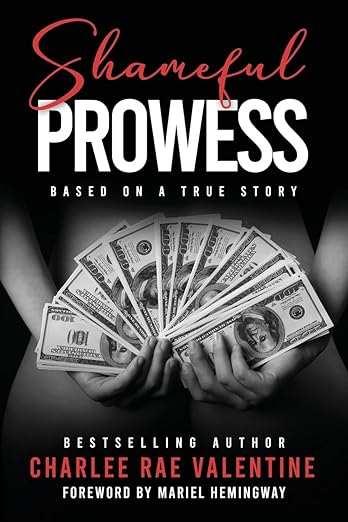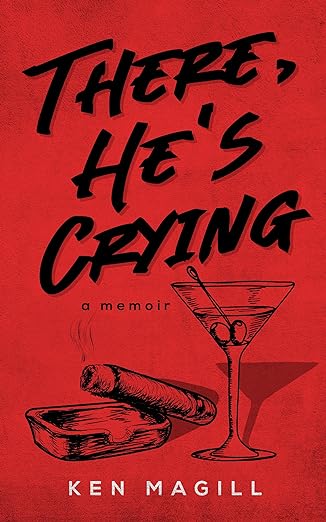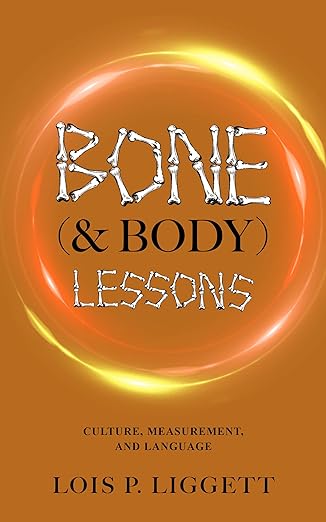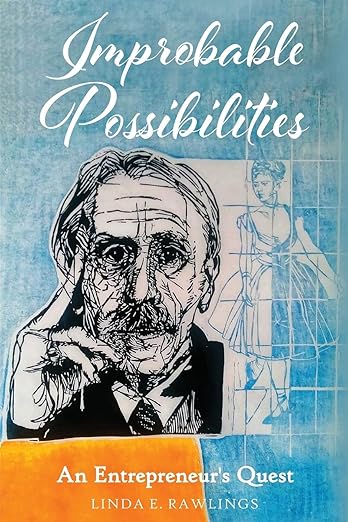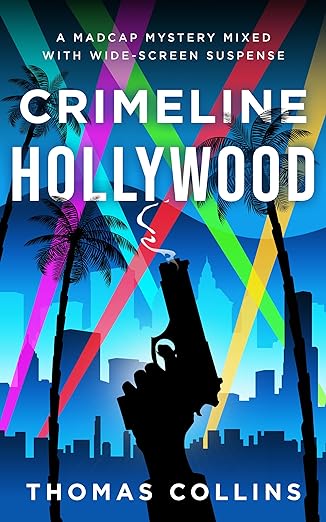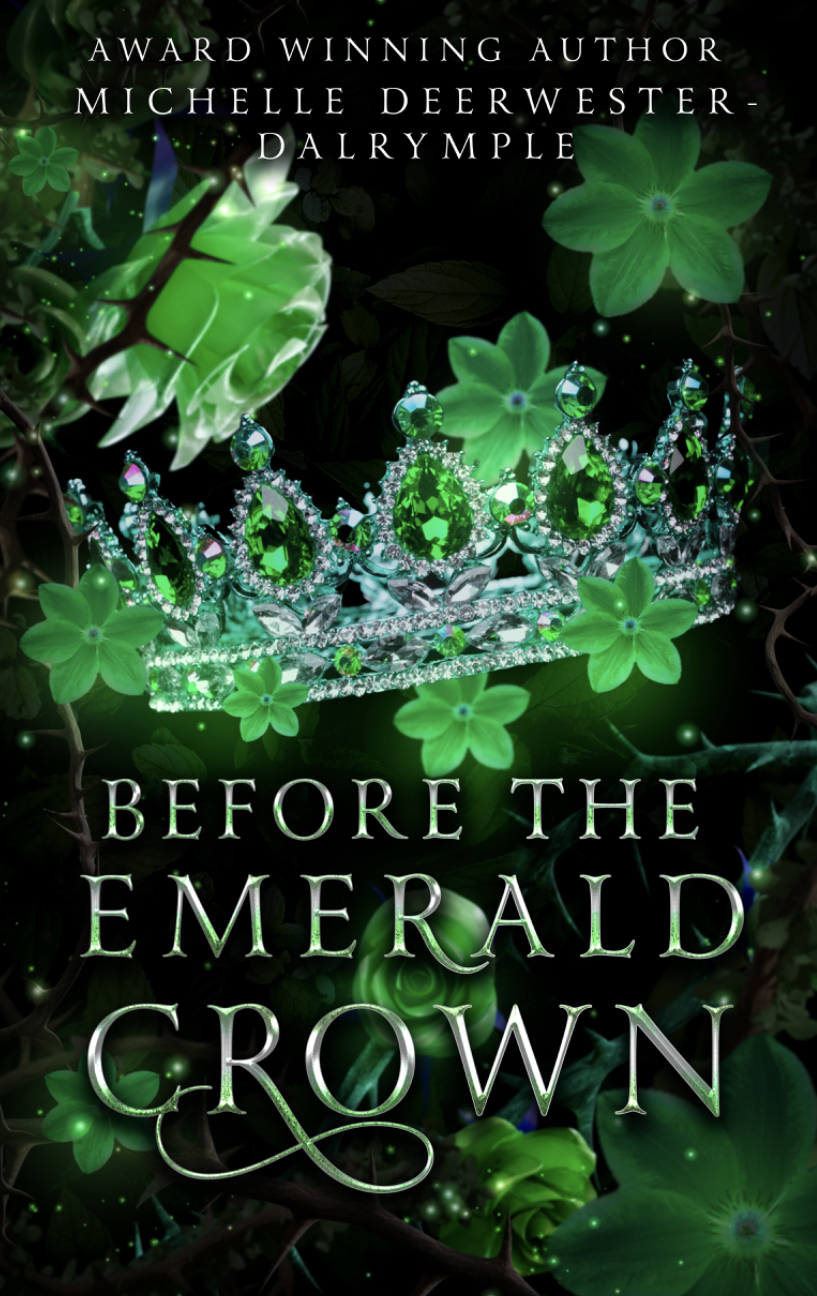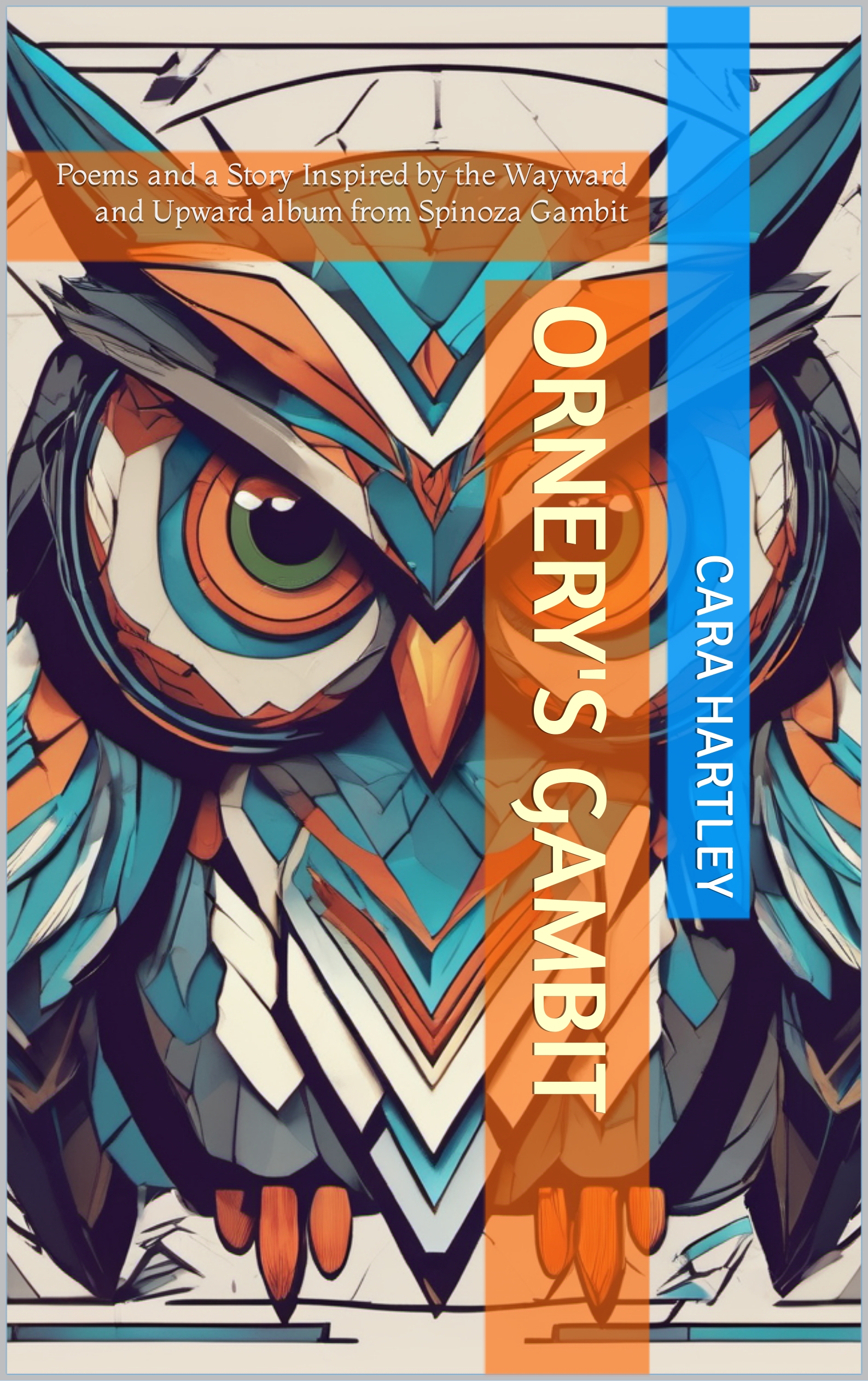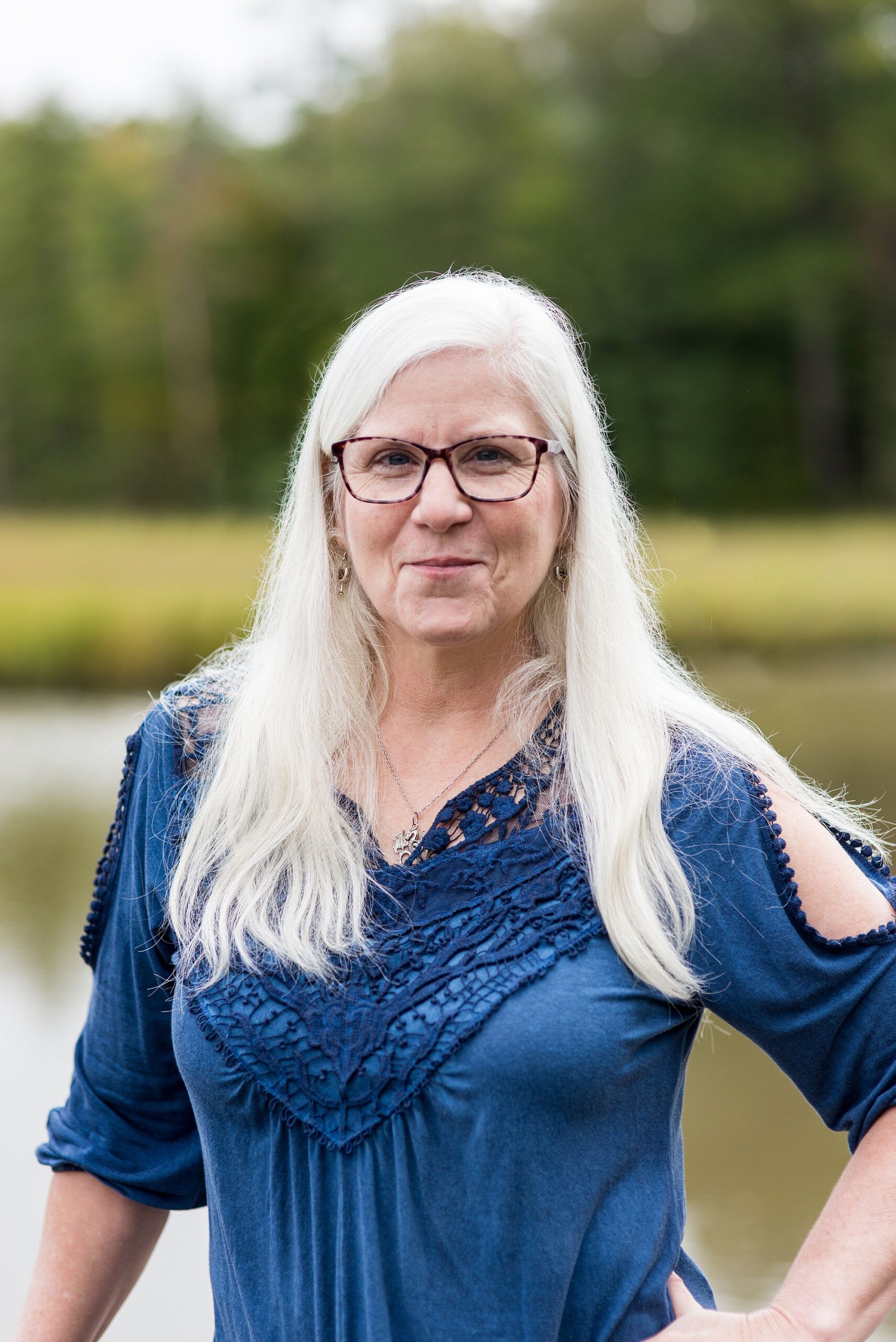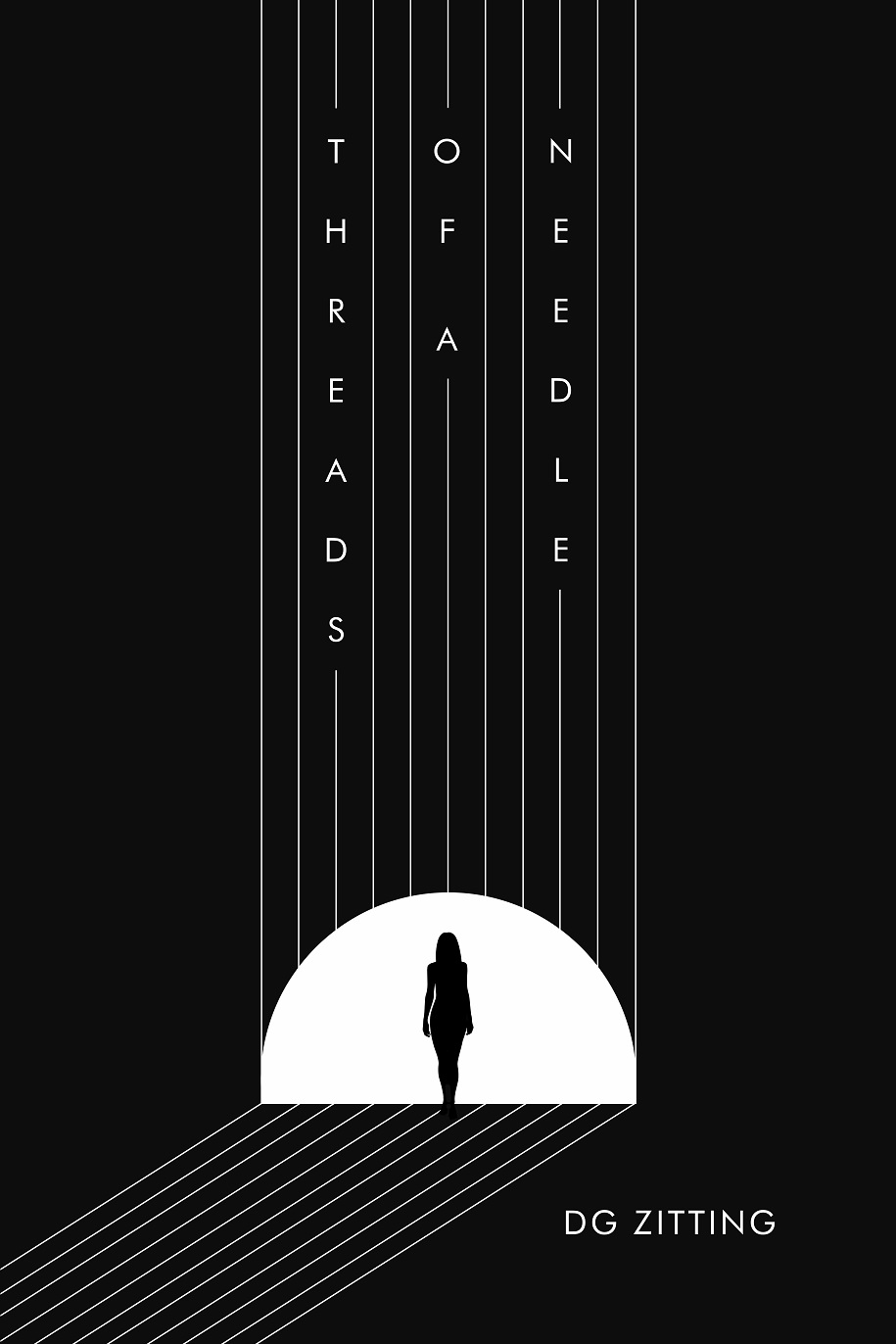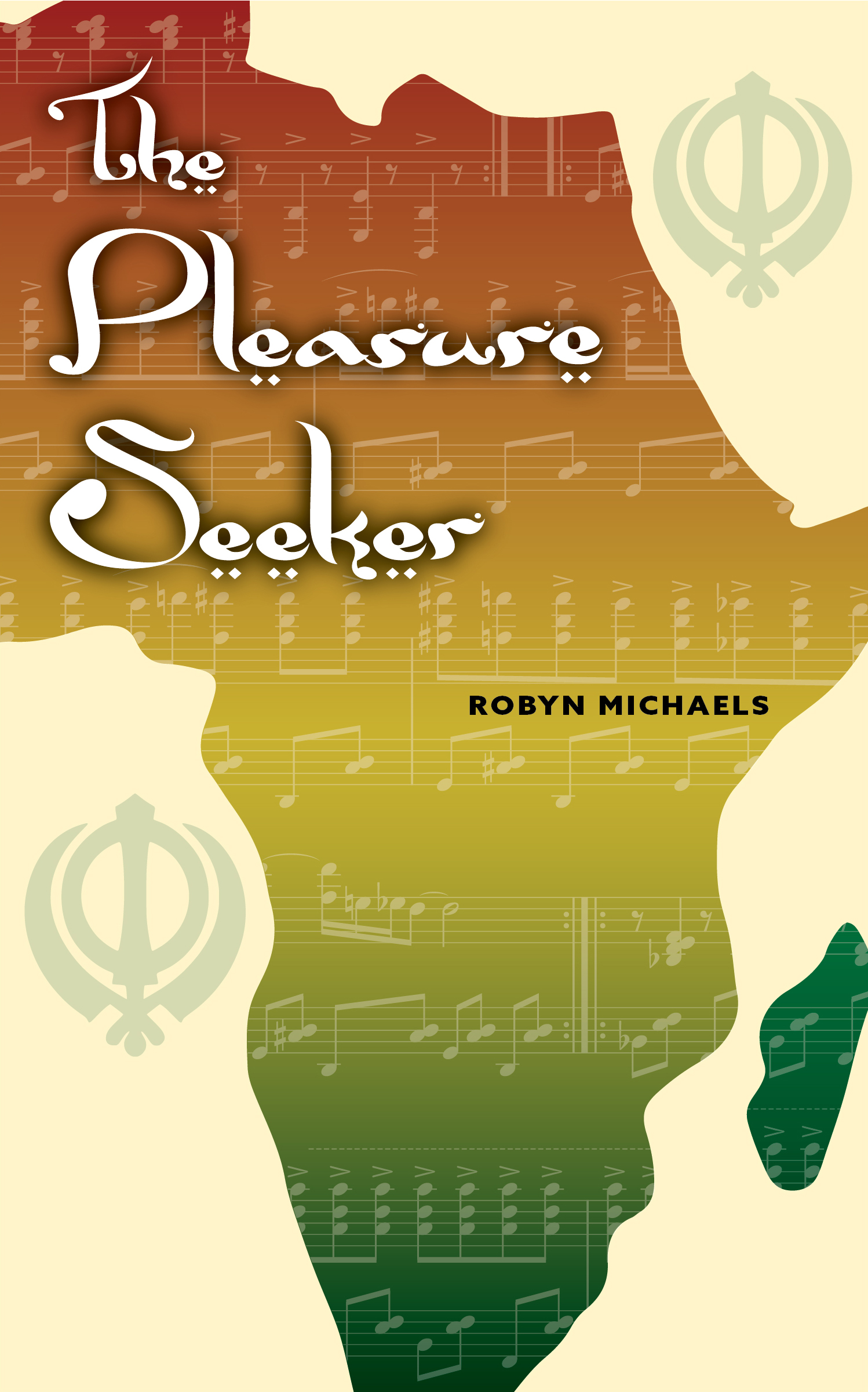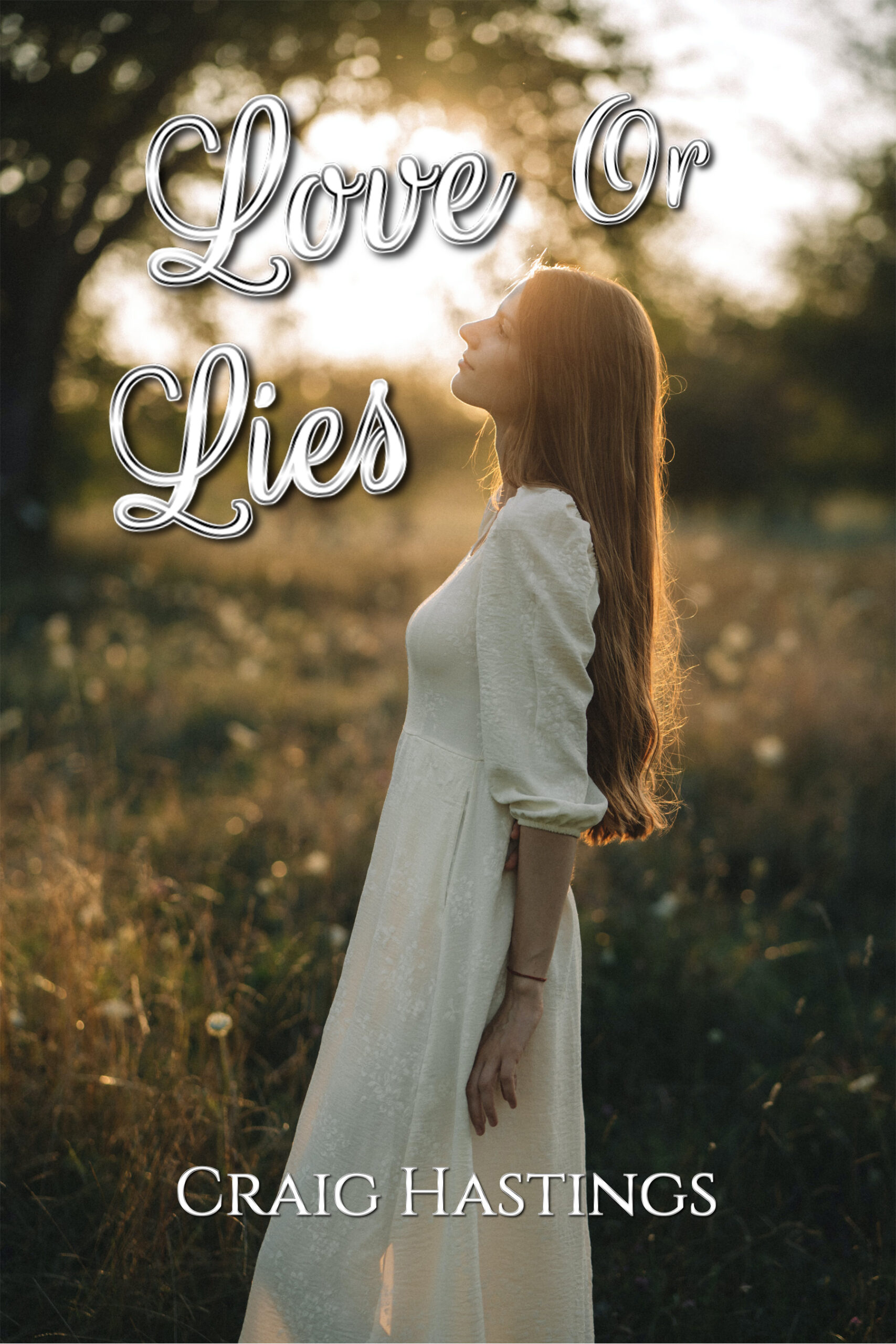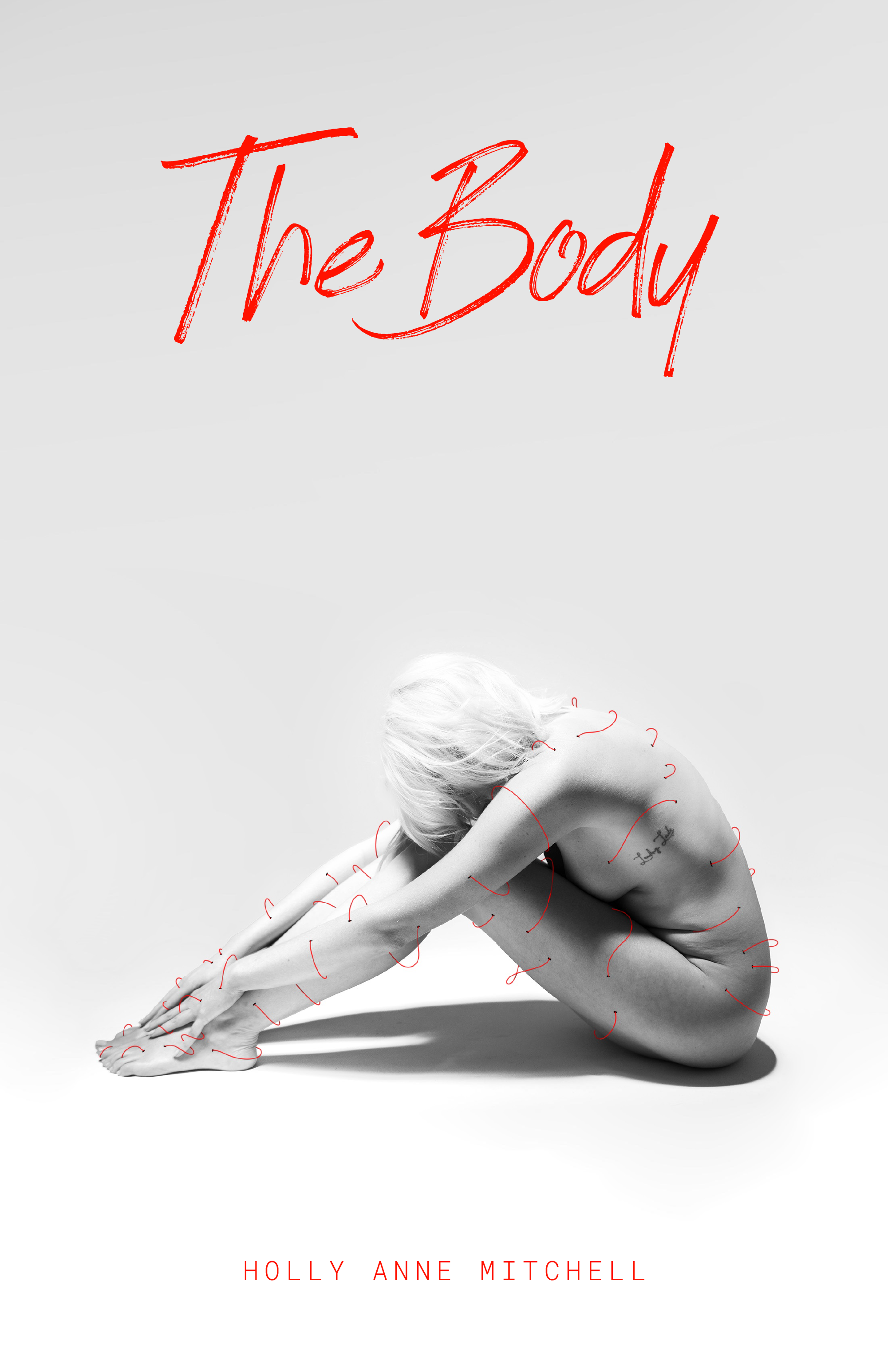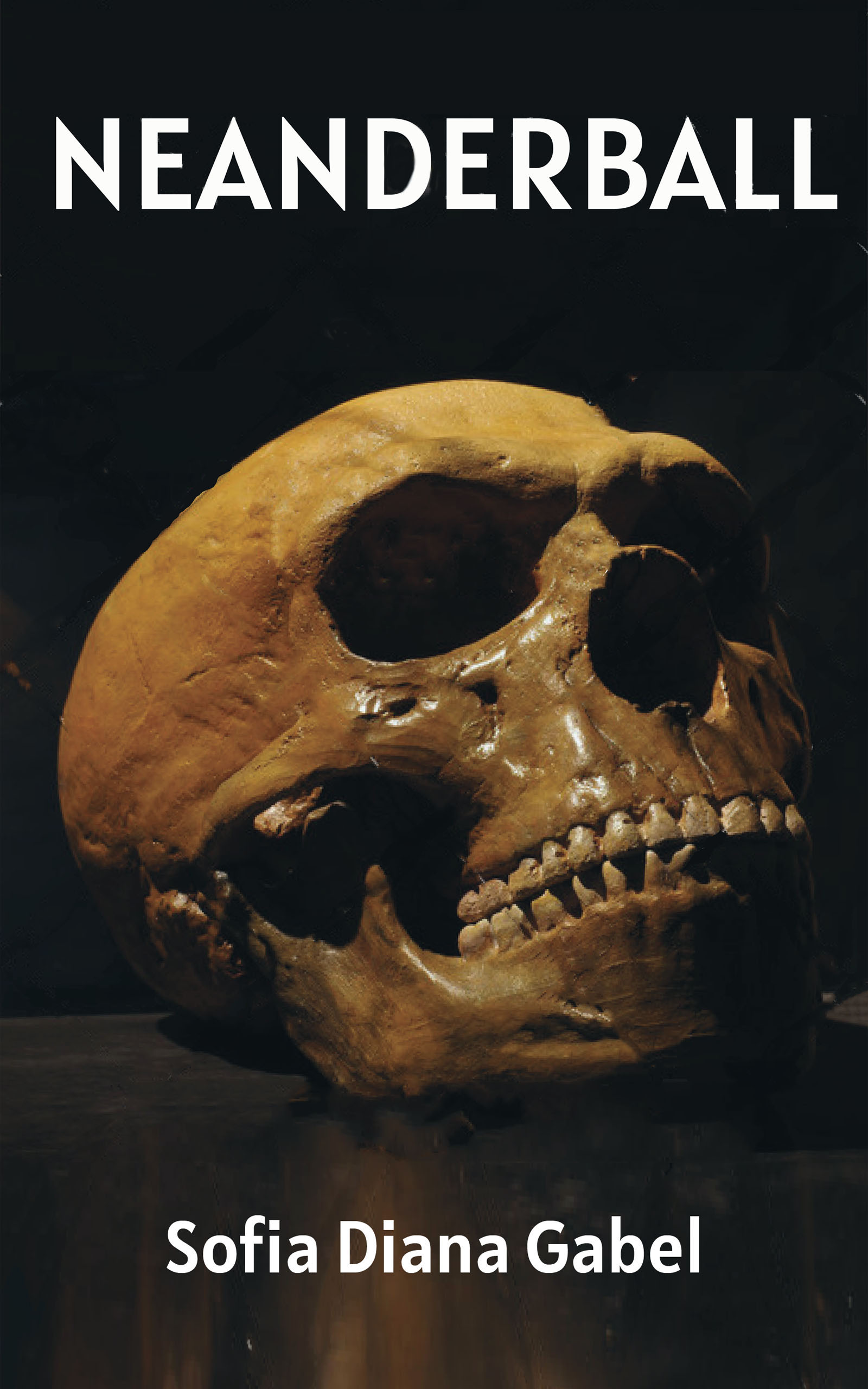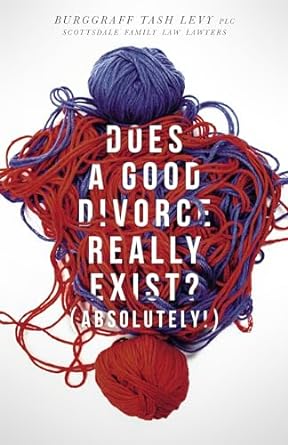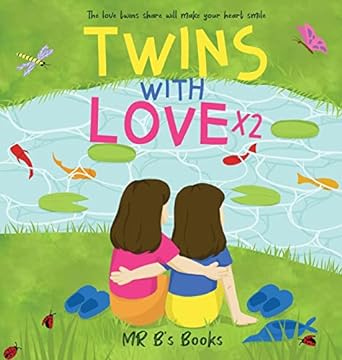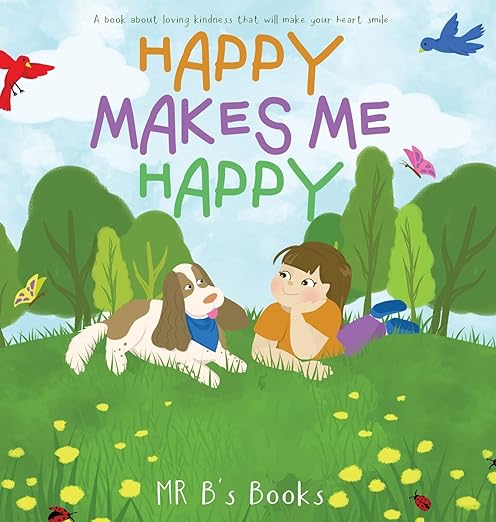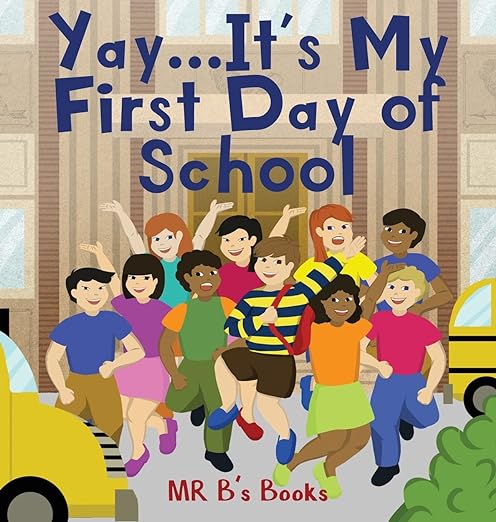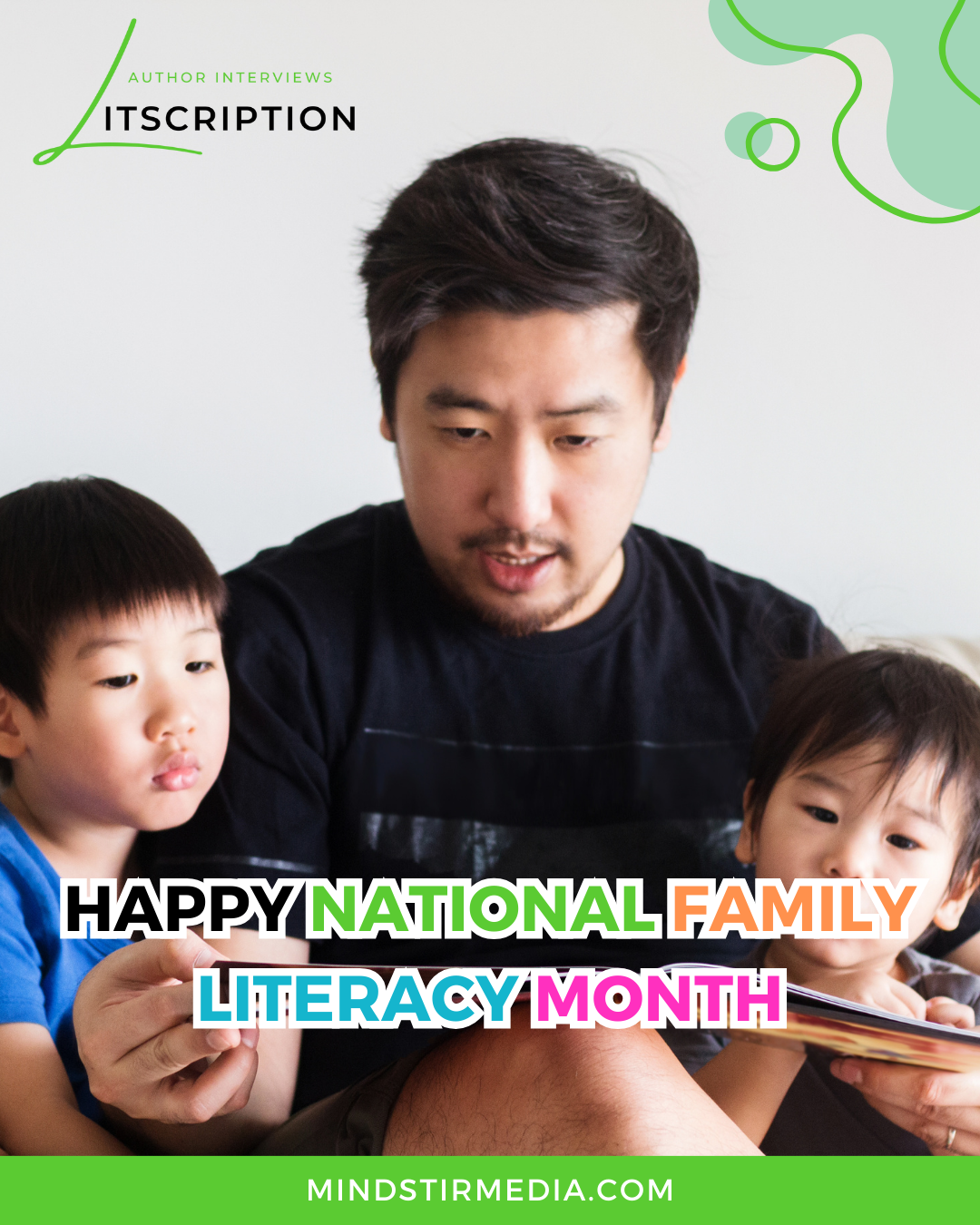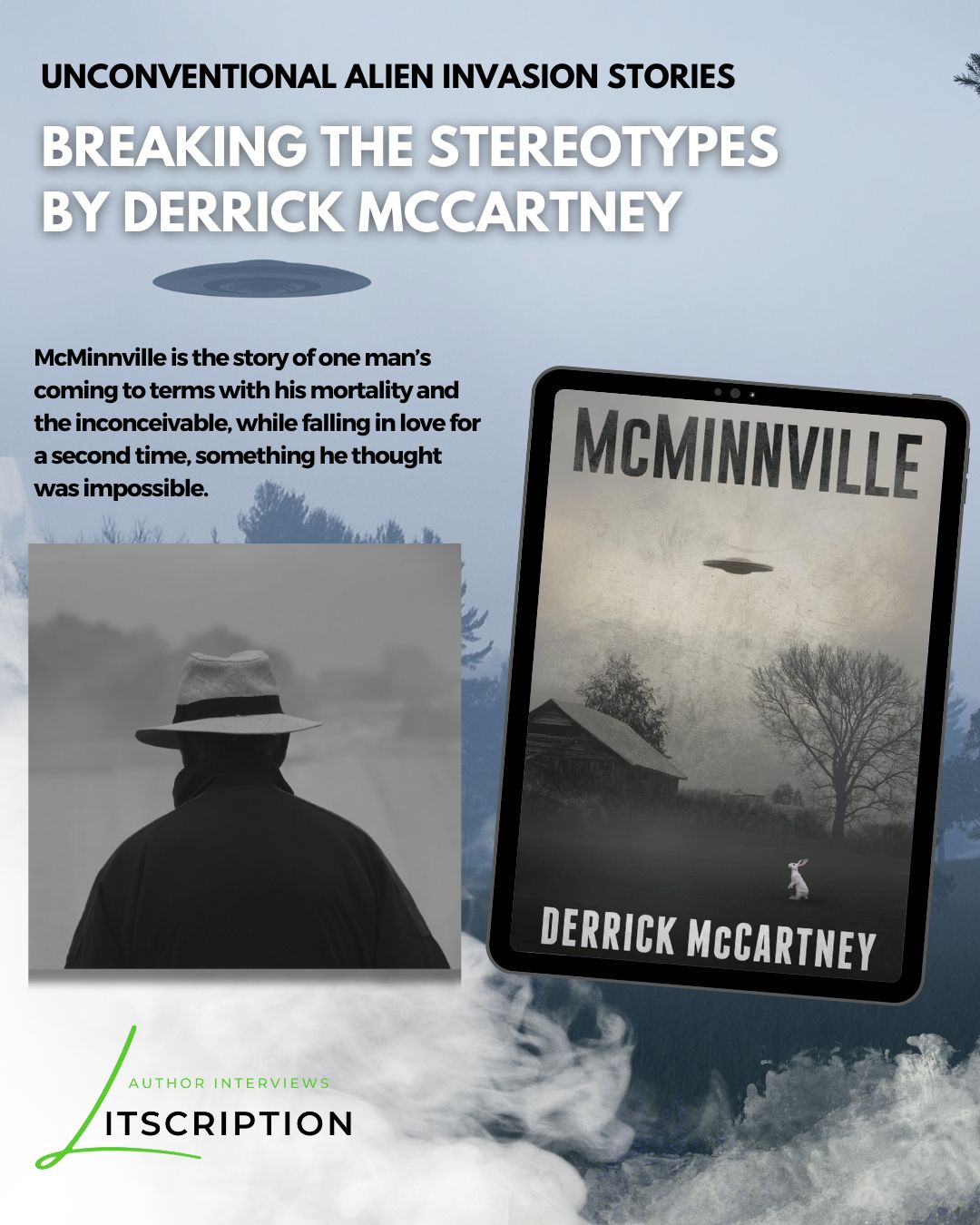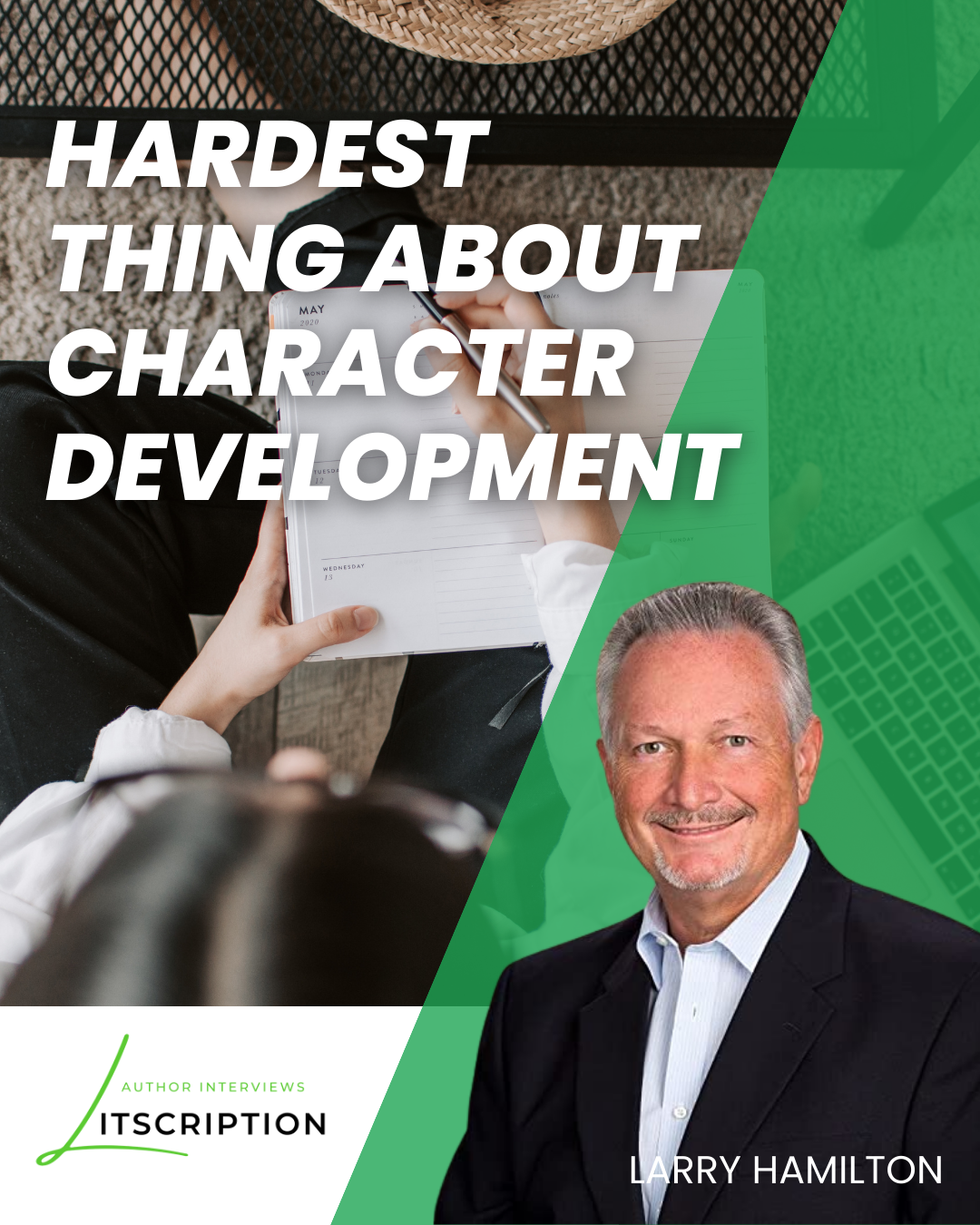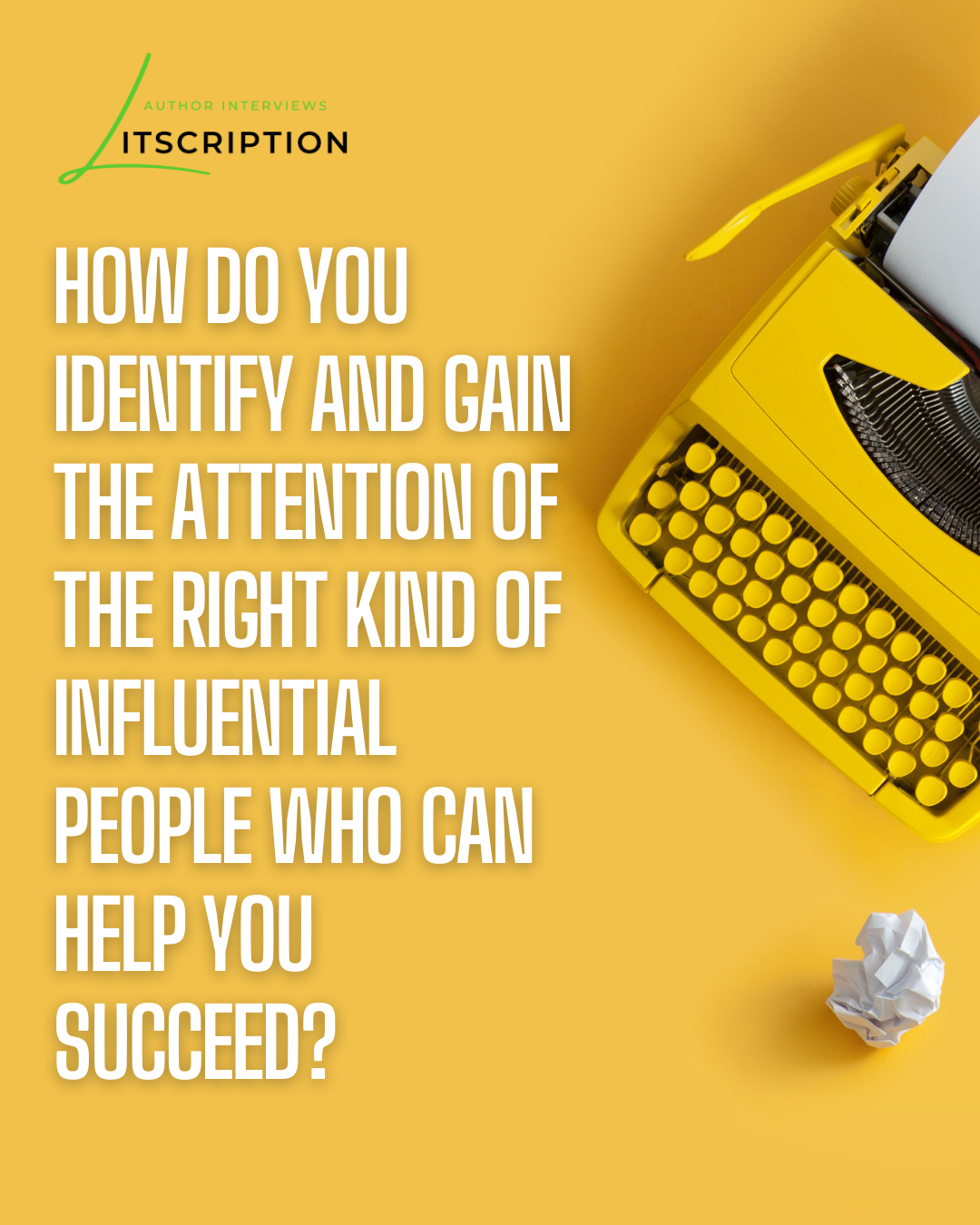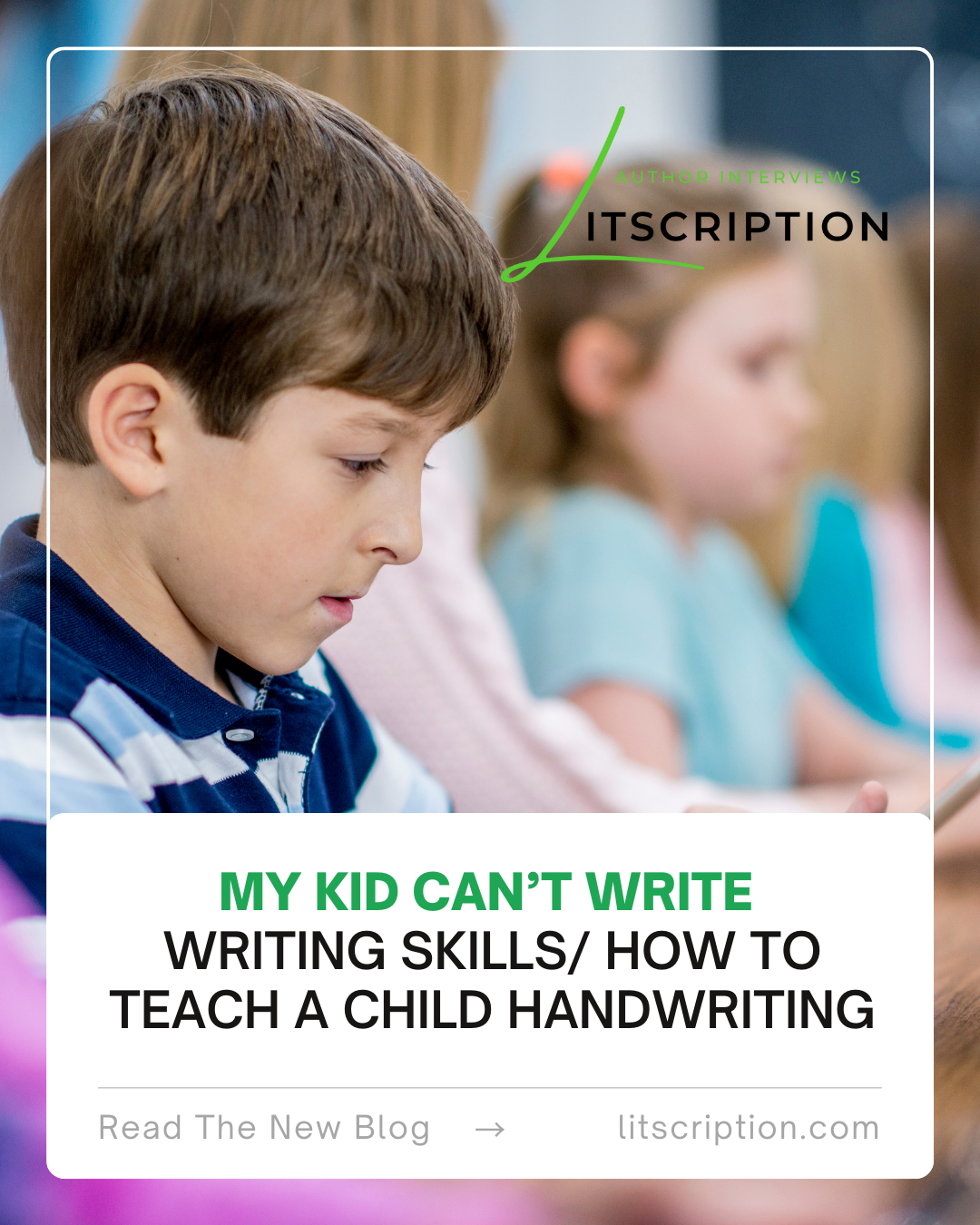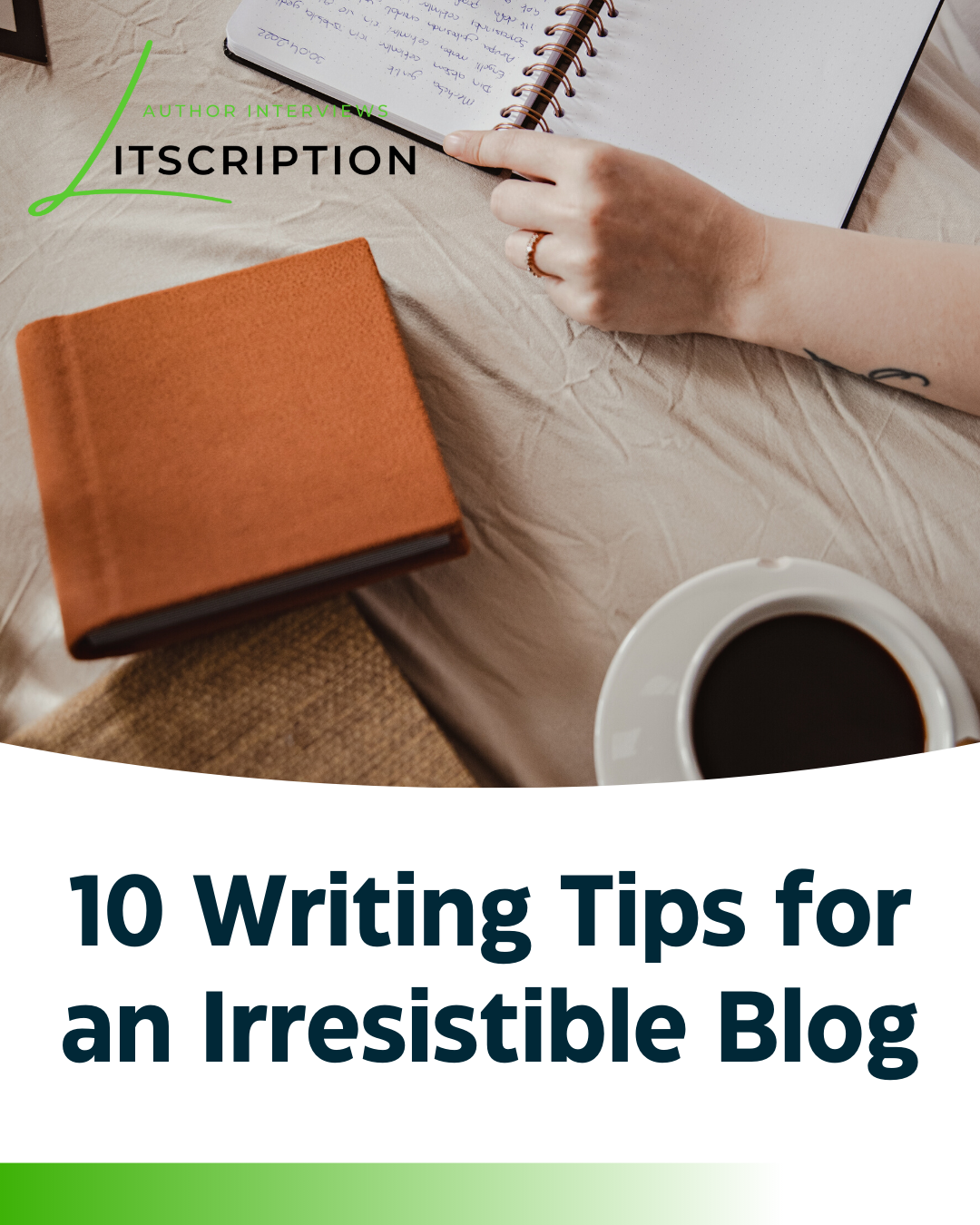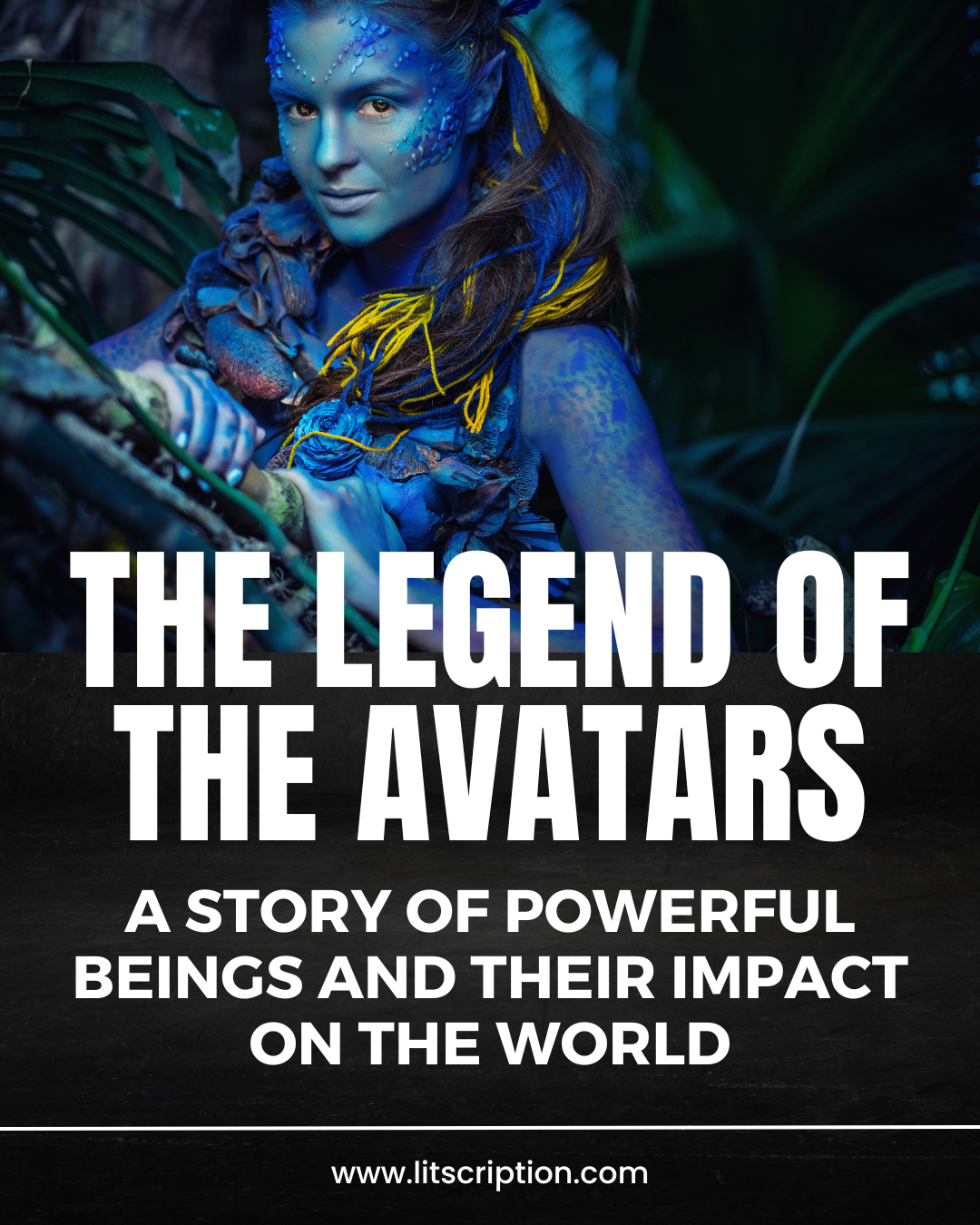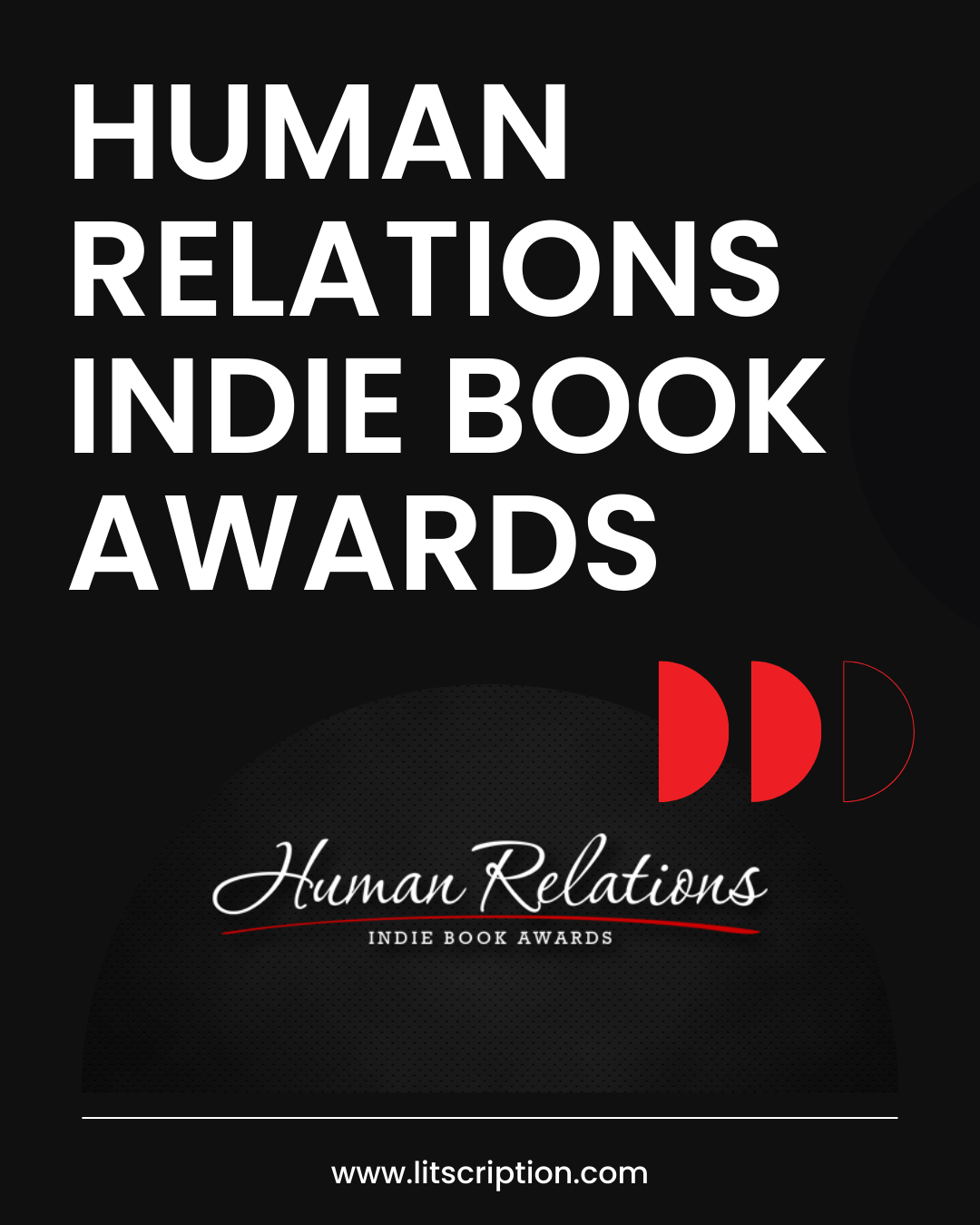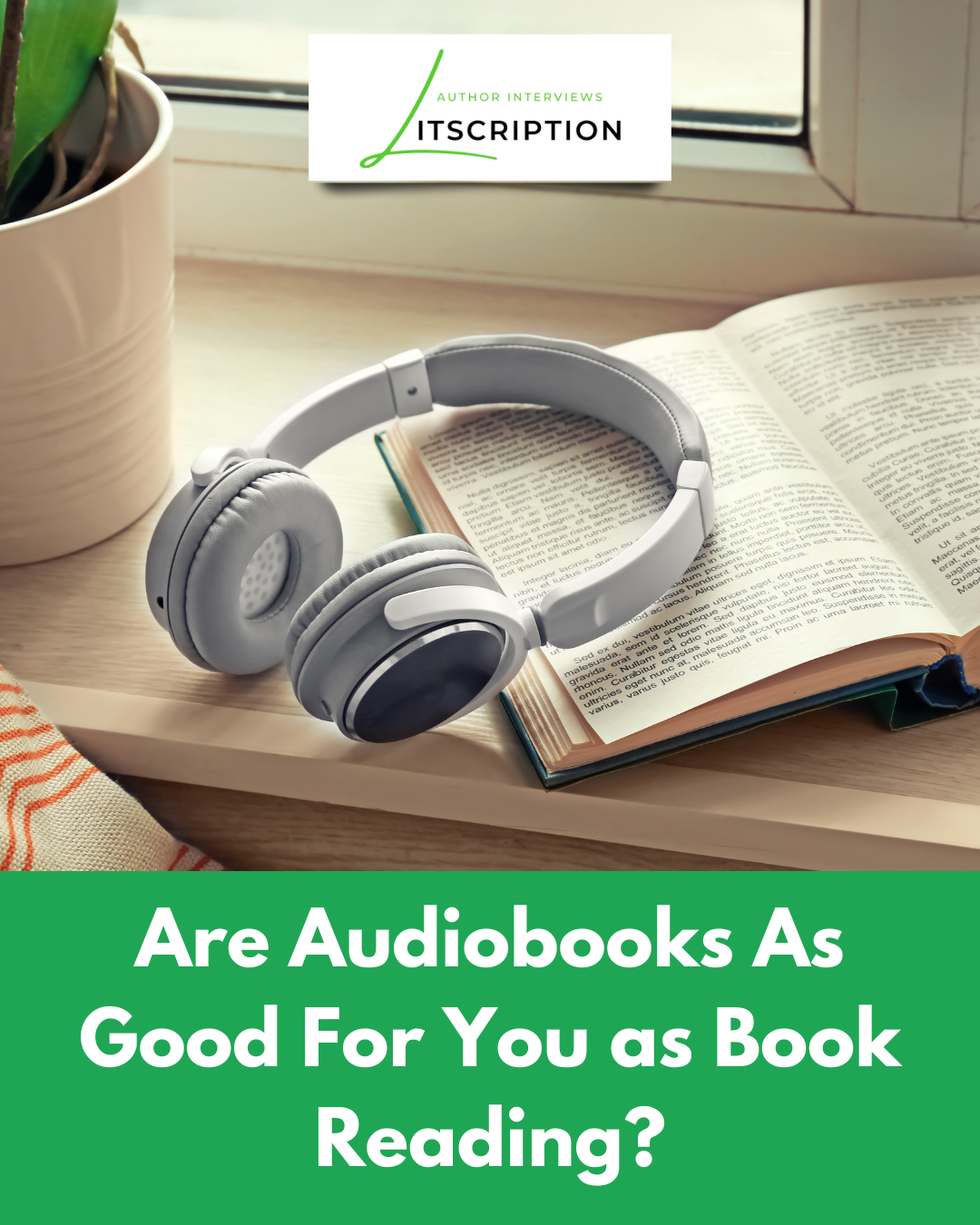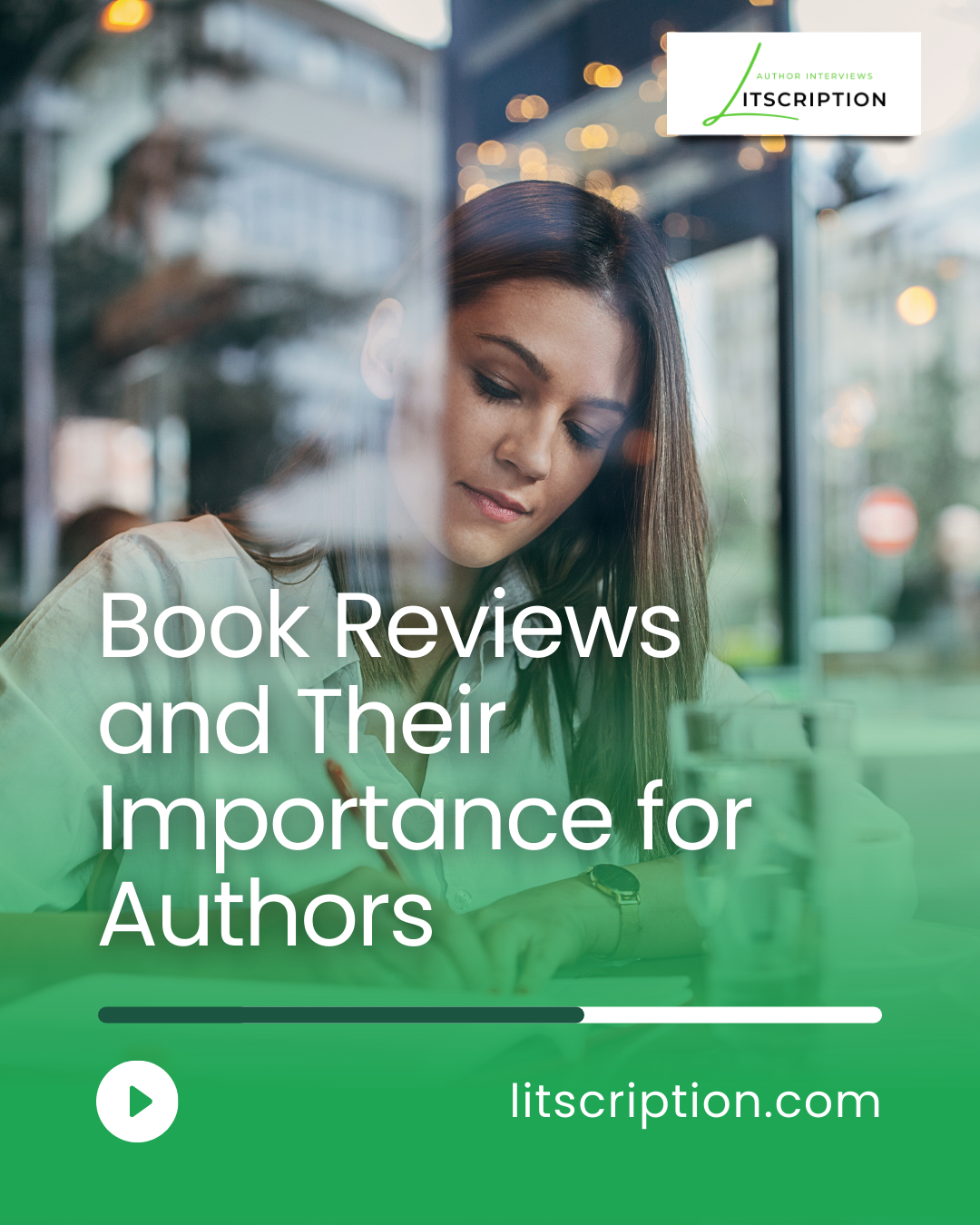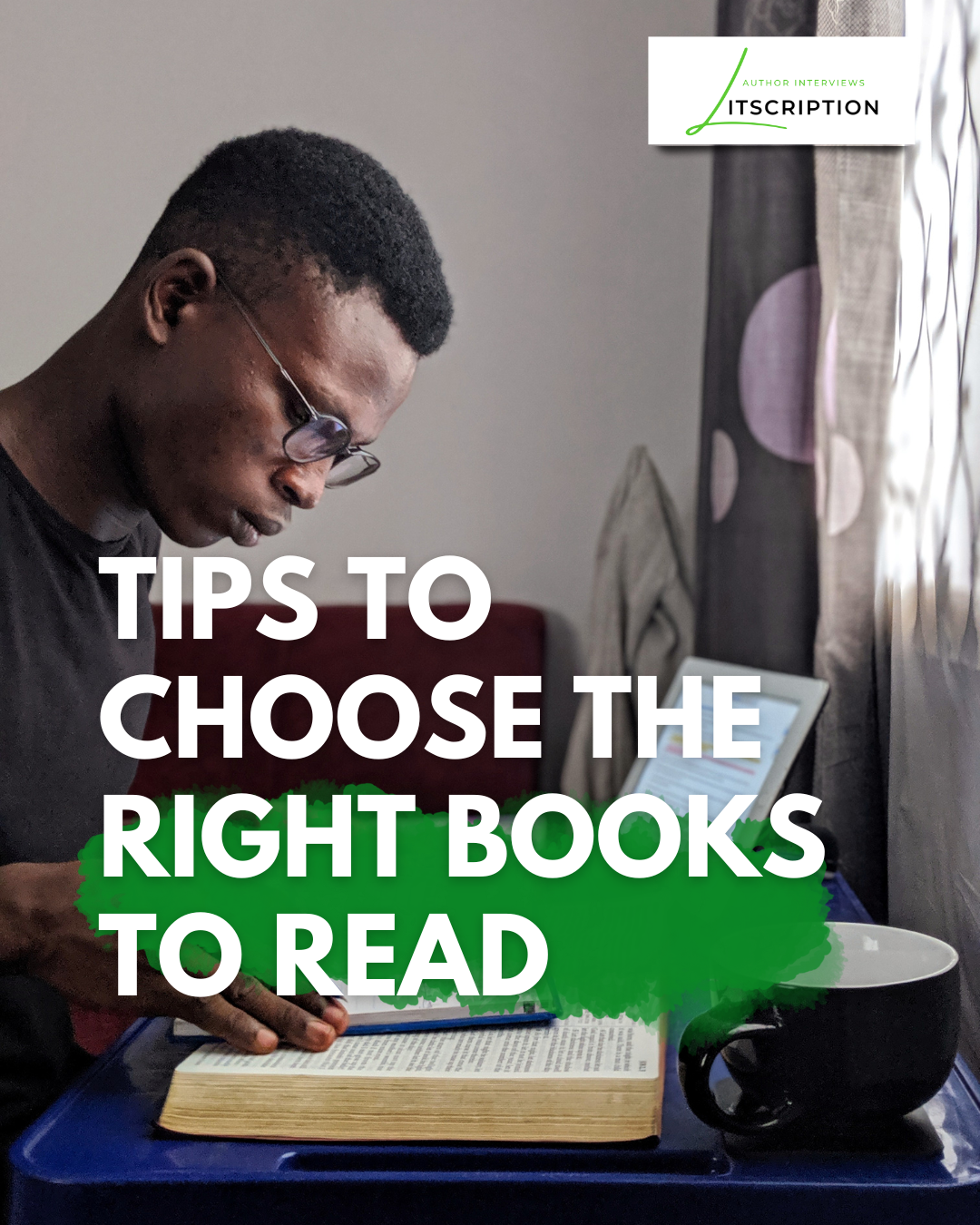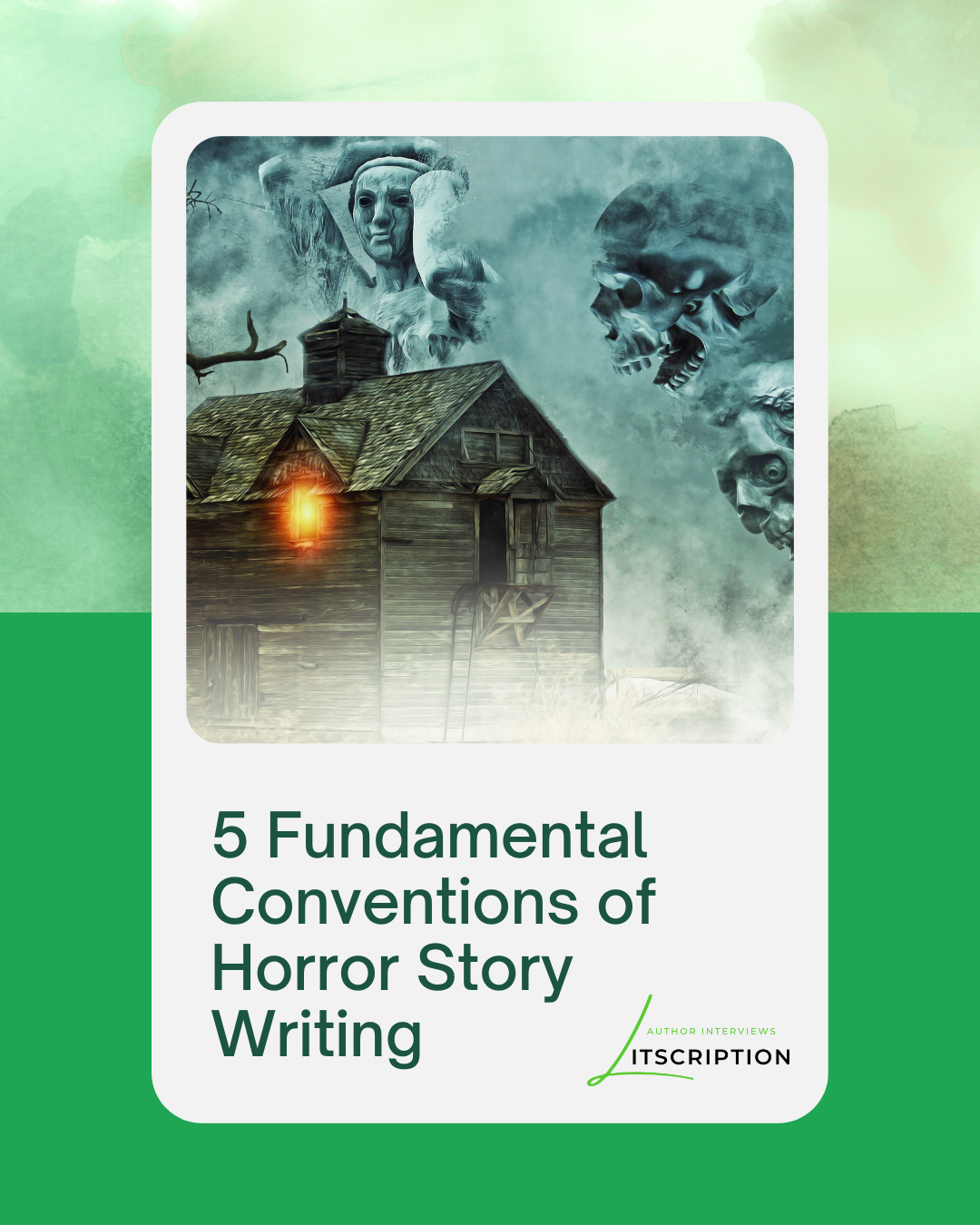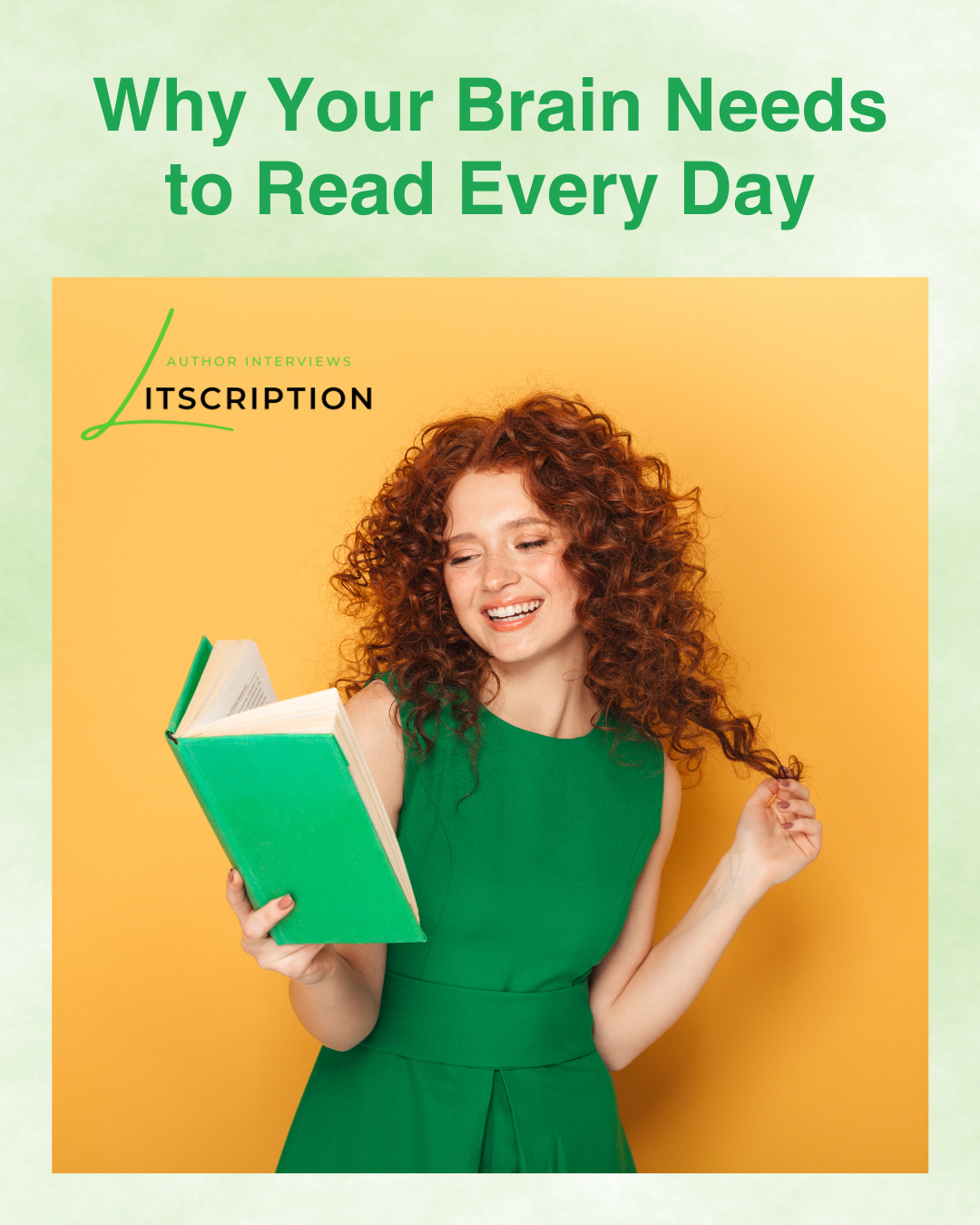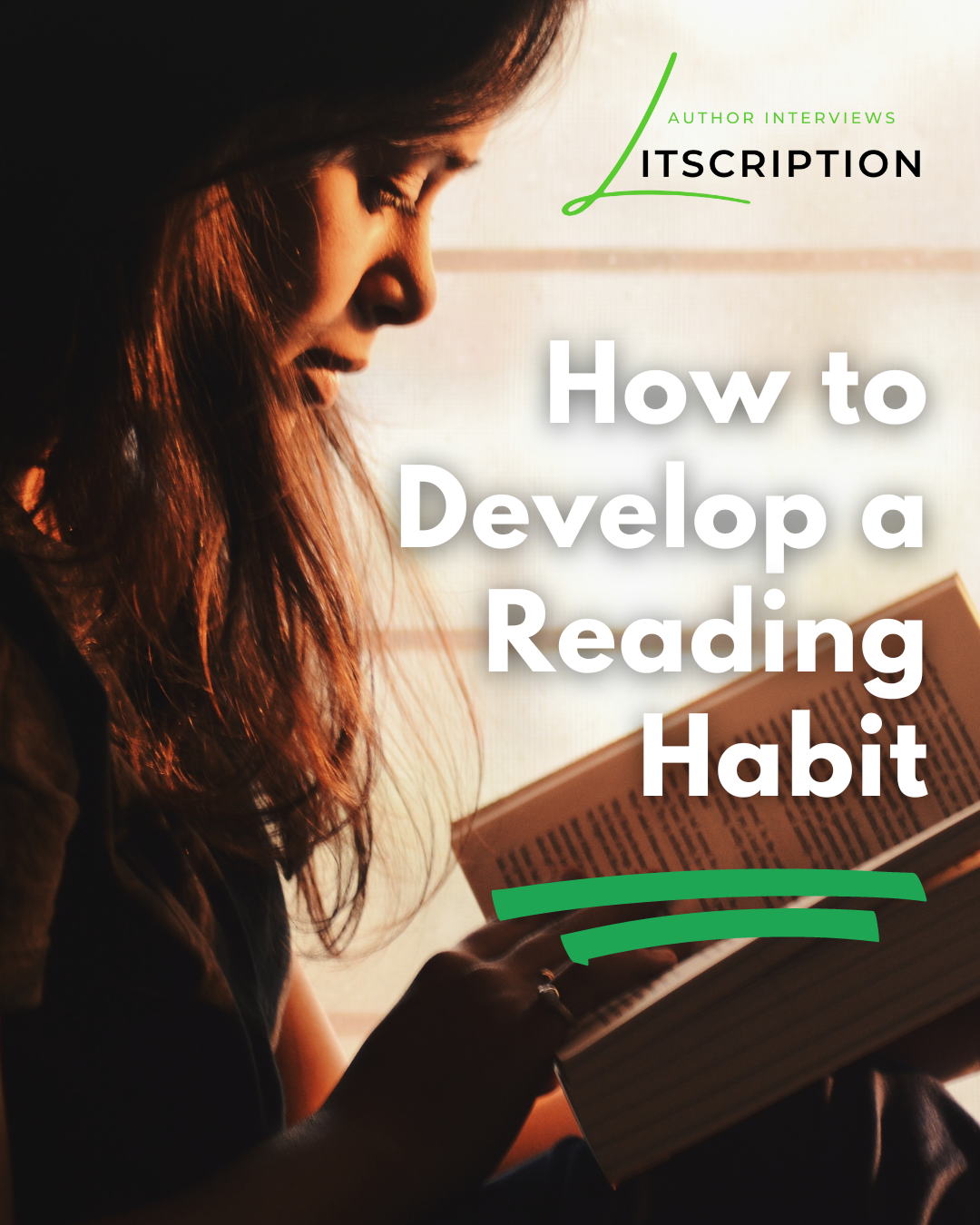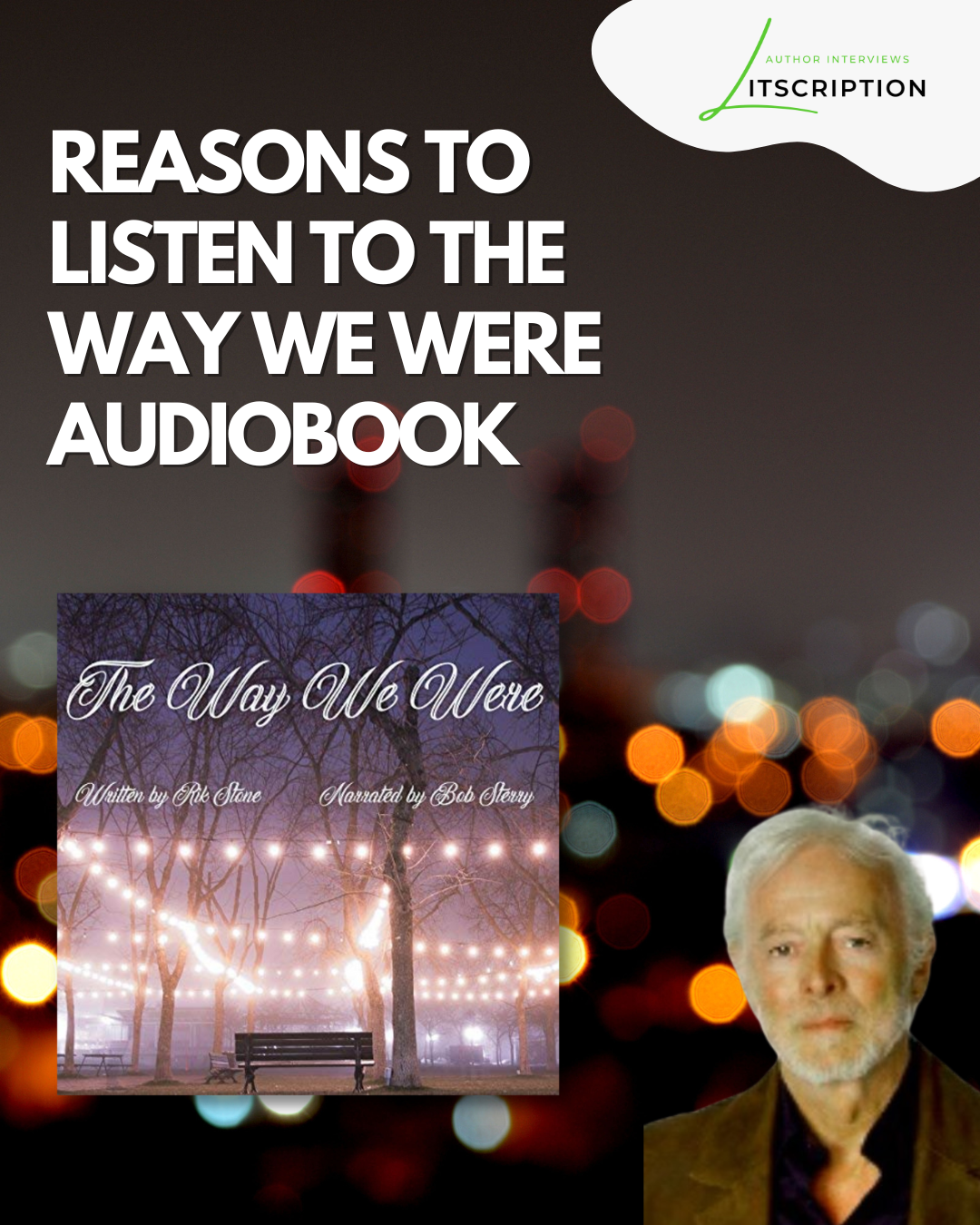Jennifer Ballow is the author of Under My Pillow, an enchanting and unique take on the tooth fairy story. Jennifer’s journey as an author is steeped in a fusion of compassion, advocacy, and an innate talent for storytelling, all underpinned by her master’s degree in social work from the University of Texas at Austin. As a devoted mother to twin girls, Jennifer’s profound personal odyssey resonates within the pages of her works, where narratives brim with the essence of connection, imagination, and a deep reverence for the written word. Her latest creation, Under My Pillow, escorts readers on a mesmerizing expedition alongside five year old Samantha as she navigates the thrilling twists surrounding her vanished first tooth. In this interview we hope to learn more about Jennifer’s creative process and what inspires her writing.
Under My Pillow is a children’s picture book that tackles themes of problem-solving, trust, and forgiveness. What inspired you to weave these particular themes into your story?
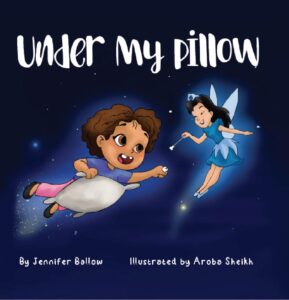 Problem-solving, trust, and forgiveness have one important thing in common. They function in relationship with other people. In our house, if someone has a problem, we all put our heads together on how best to solve it. Everyone brings a different perspective and a different set of ideas. When we open up about our problems, we practice vulnerability, and it’s vulnerability that in turn fosters trust. Where trust and love already live, forgiveness comes second-nature. So, in Under My Pillow, I hoped to show that problem-solving, trust, and forgiveness are skills that not only can be exercised and improved upon, but that are most effective when tackled with, and as part of, a “village.”
Problem-solving, trust, and forgiveness have one important thing in common. They function in relationship with other people. In our house, if someone has a problem, we all put our heads together on how best to solve it. Everyone brings a different perspective and a different set of ideas. When we open up about our problems, we practice vulnerability, and it’s vulnerability that in turn fosters trust. Where trust and love already live, forgiveness comes second-nature. So, in Under My Pillow, I hoped to show that problem-solving, trust, and forgiveness are skills that not only can be exercised and improved upon, but that are most effective when tackled with, and as part of, a “village.”
Can you give us a brief overview of the storyline of Under My Pillow and how the themes play out within the narrative?
When the book opens, main character Sam has her first loose tooth. She goes on to lose it and puts it under her pillow for the tooth fairy. The next morning, no gift and no tooth! Sam must partner with her mom, the tooth fairy, and the tooth fairy’s helper—a bird named Gordy—to solve the problem of her missing tooth. She must trust in the group’s ability to find the tooth, and then, when it turns out one of the group members may have played a role in the tooth’s disappearance, Sam must learn to forgive the prankster perpetrator.
How did you approach presenting problems in a way that young readers can relate to and understand?
Since the primary readership for Under My Pillow is kids aged four to eight, I tried to keep the story simple and straightforward. Sam’s mom tells her that the tooth fairy will exchange her lost tooth for a gift, so when there’s nothing—no tooth, and no gift—it’s immediately apparent that the “rules” of Sam’s world have been broken and it’s up to her to set things straight. Kids lose things all the time, right, so they’re bound to recognize Sam’s dilemma and relate to how she feels. The fact that it’s her tooth that’s gone missing heightens the tension, I think, because in a book about a mythical creature where almost everything is imaginary, the tooth is the one indisputably real, tactile element.
Trust is a significant theme in the story. How do the characters’ actions and decisions reflect the importance of trust, and what message do you hope young readers will take away from it?
After Sam loses her tooth, she teams up with her mom, the tooth fairy, and Gordy to find it. Together, they make a plan, confident they will be successful. Sam never doubts herself or her team; she trusts in her own capabilities and those of her friends. Trust is the opposite of doubt. It keeps us from feeling anxious or confused and encourages us to try no matter the odds.
Forgiveness is another central theme. How did you navigate the process of conveying the concept of forgiveness in a way that is accessible and meaningful to children?
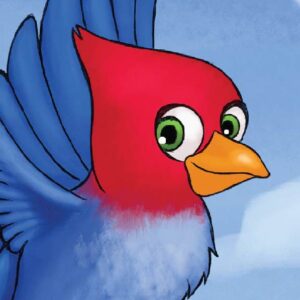 Seeing as most kids will have to forgive someone—a peer or a parent, usually—in childhood, it’s helpful to provide them with models of what forgiveness looks like. In Under My Pillow, you could say Gordy is like a peer to Sam. She expects him to be on her side. When instead he plays a trick on her, Sam feels angry and betrayed. She could bottle that emotion up—a destructive reaction—or she could work through her feelings with Gordy in a socially constructive way. Sam chooses to express her emotions, giving Gordy an opportunity to acknowledge her and apologize… which is all Sam needs to forgive him. Although Sam and Gordy end up hugging it out, I’d like to emphasize here that they don’t necessarily interact ever again. Sometimes, even when you forgive a person, your trust in them remains compromised and you may decide to keep your distance. I think that’s natural and okay.
Seeing as most kids will have to forgive someone—a peer or a parent, usually—in childhood, it’s helpful to provide them with models of what forgiveness looks like. In Under My Pillow, you could say Gordy is like a peer to Sam. She expects him to be on her side. When instead he plays a trick on her, Sam feels angry and betrayed. She could bottle that emotion up—a destructive reaction—or she could work through her feelings with Gordy in a socially constructive way. Sam chooses to express her emotions, giving Gordy an opportunity to acknowledge her and apologize… which is all Sam needs to forgive him. Although Sam and Gordy end up hugging it out, I’d like to emphasize here that they don’t necessarily interact ever again. Sometimes, even when you forgive a person, your trust in them remains compromised and you may decide to keep your distance. I think that’s natural and okay.
Could you share an example from the book that highlights how the characters apply problem-solving skills to overcome a challenge?
One great problem-solving skill, regardless of your age or anything else, is being able to ask for help. It’s an especially useful skill for kids who must rely on the grown-ups around them to be mentors and guides who offer appropriate advice. What kids naturally have going for them is a level of wisdom and intuition that adults, if they know what’s good for them, will pay attention to—for example, when Sam states clearly to Gordy, “I’m feeling angry that you tricked me.” She is in touch with and practicing vulnerability around her emotions, a skill that Sam’s mom probably modeled for her. The “problem” here isn’t that Sam’s angry; it’s that someone she trusted betrayed her. When Sam forgives Gordy, she’s modeling for readers that forgiveness can be its own problem-solving skill.
The illustrations in a children’s picture book are crucial for conveying the emotions and story. How did you collaborate with the illustrator to visually enhance the themes of the book?
Illustrator Aroba Sheikh and I collaborated in three ways: on the character groupings, on their facial expressions, and on the book’s color scheme. In the panel where the whole group is looking for Sam’s missing tooth, I thought it was important to have everyone represented on the page to underscore the power of teamwork. Facial expressions, meanwhile, are important in every panel because they reinforce what the story’s saying. Does a character look angry? Neutral? Happy? It should correspond with their stated feelings on a given page. Finally, I wanted a warm color palette that would add to Sam’s feelings of trust in a mom and friends who clearly care about her wellbeing.
Children’s books often hold valuable lessons for readers of all ages. What do you hope parents and caregivers will discuss with their children after reading Under My Pillow?
I hope they stop and read the questions at the back of the book without skipping over them, because they’re important! Reflecting on and answering questions about a story after reading it encourages critical thinking skills and aids in the reader’s retention of the story. Some of the questions concern the tooth fairy: Who is she to you? Do you believe in her? Is the tooth fairy tradition one your family embraces? Other questions invite kids to make the story their own—What kind of gift do you think the tooth fairy brought Sam?—or extrapolate lessons like, How would you feel if someone played a trick on you? Would it be easy or hard to forgive the person?
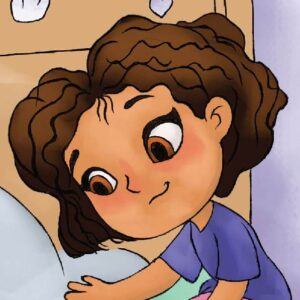 Did your personal experiences or observations influence the development of the characters and their journey in Under My Pillow?
Did your personal experiences or observations influence the development of the characters and their journey in Under My Pillow?
To an extent, you could say that main character Sam is based on my girls and the mom character is based on me. As for the tooth fairy, she is a combination of what I once imagined the tooth fairy to look like as a child, and the drawings of the tooth fairy my girls used to make when they were younger. Posing as the tooth fairy, I would write letters to them and add little clipart images of fairies that changed as my daughters grew older. I suppose I could have stretched myself a bit further and played, for example, with making the tooth fairy male or even something else entirely, but that’s an idea for another book!
Children’s books can be a powerful medium for teaching empathy. How did you approach developing characters that young readers can connect with on an emotional level?
Sam is your average kid who asks big questions and likes to go on quests. Her mom is the average mom—not a bodybuilder or a supermodel, but soft and curvy and loving. Anyone with a mom in their life will bring the love they feel for their mom to Sam’s mom. The tooth fairy and her bird-helper Gordy are both magical creatures, but Gordy is also a trickster. Any kid who’s ever been tortured by a bully or made the butt of a joke by the class clown will relate to how Gordy makes Sam feel. The real “trick” there will be seeing if, like Sam, the reader, too, can develop empathy for Gordy (and/or their real-life antagonist). Can you put yourself in Gordy’s shoes and see his side? That’s the next-level challenge.
Under My Pillow offers a combination of fun and surprise in its storytelling. How did you balance these elements while still delivering a thoughtful message?
I think the most important part of any children’s book is the happy ending. No matter how funny or serious—or in the case of The Giving Tree, bittersweet—the rest of the tale is, the ending should be happy. The rest can reflect the author’s personality and values, which for me are all about fun and surprise. That doesn’t mean there aren’t thoughtful moments, like when Sam and Gordy make up post-confrontation. But there’s also a lot of whimsy and mystery. It’s the author’s job to know when to be thoughtful and when, say, levity is appropriate.
Were there any challenges you encountered while crafting a story that is both entertaining and carries a deeper thematic meaning?
For a story to work on multiple levels, it has to be complex enough that there’s room for both merriment and meaning. I started outlining Under My Pillow by free-writing almost twenty pages of ideas for plot points and snippets of dialogue before hiring a writing coach who could help me isolate the most important ones. Those isolated story “beats” as they’re called form my book’s arc, or the journey Sam undergoes as she transforms from a naive little girl to someone made more mature by time and experience. It can certainly be a challenge to figure out your arc, but once you do, you’re well on your way to having a complete book.
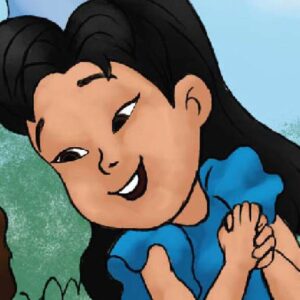 Do you have any favorite moments or scenes from Under My Pillow that you’d like to share with readers?
Do you have any favorite moments or scenes from Under My Pillow that you’d like to share with readers?
I really love when the tooth fairy visits Sam’s house. That’s something I always wished could happen when I was young—that she’d just show up in the middle of the day and we’d get to interact. I also love how Aroba portrayed the tooth fairy’s world. All of the teeth everywhere, some of them with expressions, and her extra dress hanging in the background—it’s just so fun.
Teaching life skills through storytelling is a unique approach. How do you envision educators and parents incorporating the themes of your book into discussions or activities with children?
Beyond the thought questions included at the back of the book, there’s a free tooth-fairy-themed maze and word search for kids on my author website here. I’d also like to see teachers develop creative writing exercises around Under My Pillow, such as directing students to write their own children’s books or personal essays about the tooth fairy that incorporate class learning objectives. With their parents, kids could write letters to the tooth fairy. Letter-writing promotes self-expression and the formation of opinions in addition to physical motor skills.
Find the author
Purchase Under My Pillow on Amazon
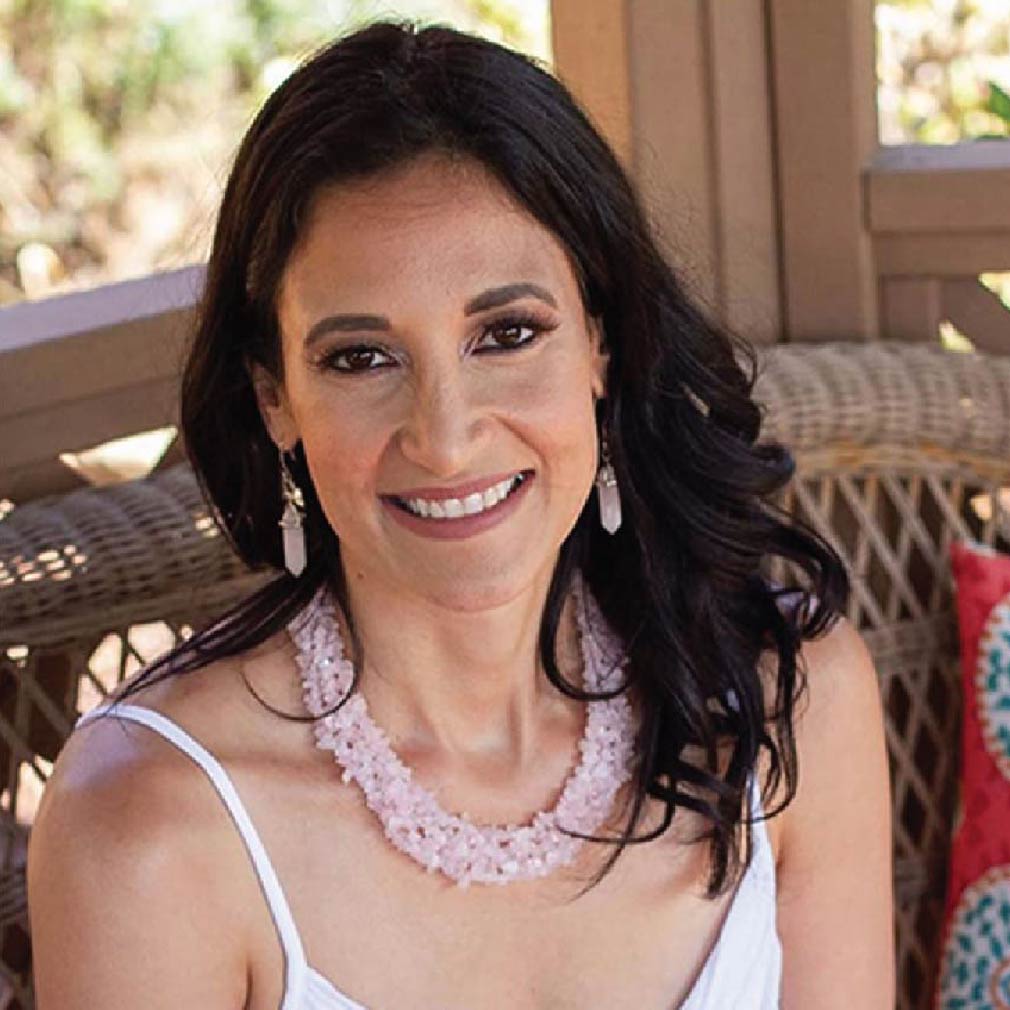 About the Author Jennifer Ballow
About the Author Jennifer Ballow
I’m a new children’s book author and I love to help people in all stages and from all walks of life live the best lives that they can. In publishing stories, I hope to inspire you and your family to connect through reading, imagination-building, and creative writing. I adore books and enjoy collecting children’s literature, biographies, and short stories. I’m also a social worker & graduated from the University of Texas in Austin. I care about the community and want all people to have the same great opportunities that I have had.
I can’t wait to meet you and get to know your dreams and your stories!

